Contents
Vietnam Museum of Ethnology | Introduction
Located in the Cầu Giấy district of Hanoi, the Vietnam Museum of Ethnology (Vietnam Museum of Ethnology) is one of Hanoi's most popular museums. The rich displays provide visitors with a deep understanding of the culture and traditions of Vietnam's 54 officially recognized ethnic groups. The exhibitions are divided into indoor and outdoor sections, with the museum's indoor exhibition area covering 2,000 square meters and the outdoor exhibition area spanning 20,000 square meters, allowing for a full day's exploration. It is a must-visit for visitors interested in the cultural diversity of Vietnam's ethnic groups, and is particularly suitable for families with children, as many of the interactive exhibits and activities are highly educational.
🧳 A full travel resource kit for this topic is currently in the works.
It will include itinerary plans, recommended stays, custom maps, and useful tips.
Vietnam Museum of Ethnology | Visiting Information
The Vietnam Museum of Ethnology is about 8 kilometers from Hanoi's Hoan Kiem Lake, and the most convenient way to get there is by taking a Grab, with the journey taking about half an hour. If you prefer to use public transportation, buses number 14 or 38 depart from Hoan Kiem Lake and go directly to the museum, with the trip taking about an hour.
Find a stay in Hanoi
The museum is open from Tuesday to Sunday, from 8:30 AM to 5:30 PM, and is closed on Mondays. The admission fee for adults is 40,000 Vietnamese Dong, while for children under 16, it is 15,000 Vietnamese Dong. The museum offers guided tours in English and French. If you are interested in guided explanations, you might also consider participating in a Hanoi City Tour that includes the Vietnam Museum of Ethnology.
City Tour including Vietnamese Ethnology Museum
- Hotel search: Agoda
- Activities & tickets: KKday / Klook / TripAdvisor
- Travel credit cards (US only): My card picks + beginner tips
Vietnam Museum of Ethnology | What To See
Indoor Exhibition
The indoor exhibition area, through a wealth of exhibits and multimedia displays, narrates the history, culture, and lifestyle of various ethnic groups. The museum's architecture is an artwork in itself, blending modern and traditional elements. The indoor exhibition building was designed by Ha Duc Linh, an architect belonging to the Tày ethnic group, and its shape resembles a Đông Sơn drum, while the interior architecture was designed by French architect Véronique Dollfus.
The indoor exhibits include over 30,000 items, photos, and videos, showcasing the lifestyles of Vietnam's ethnic groups. Vietnam has a total of 54 ethnic groups, and just exploring the introductions to these 54 groups is a rich and extensive experience. The largest ethnic group is the Viet (Kinh) people, accounting for 85% of the total population, while the other 53 are minority groups, divided into five different language families. These ethnic groups influence each other and are also influenced by neighboring countries such as China, India, and other Southeast Asian nations, leading to a diversity in culture that includes various forms of housing and many different customs.
The exhibition covers various aspects of ethnic culture, including ethnic music and dance, traditional costumes, lifestyles, social structures, religious beliefs, and handicrafts, all with very detailed introductions. Reading the descriptions is quite interesting. For example, the Thay ethnic group lives by the river, the H'Mong can tell by names whether they are relatives and whether they can marry, and the Dao ethnic group wears hats and shaves off eyebrows after marriage, and so on.
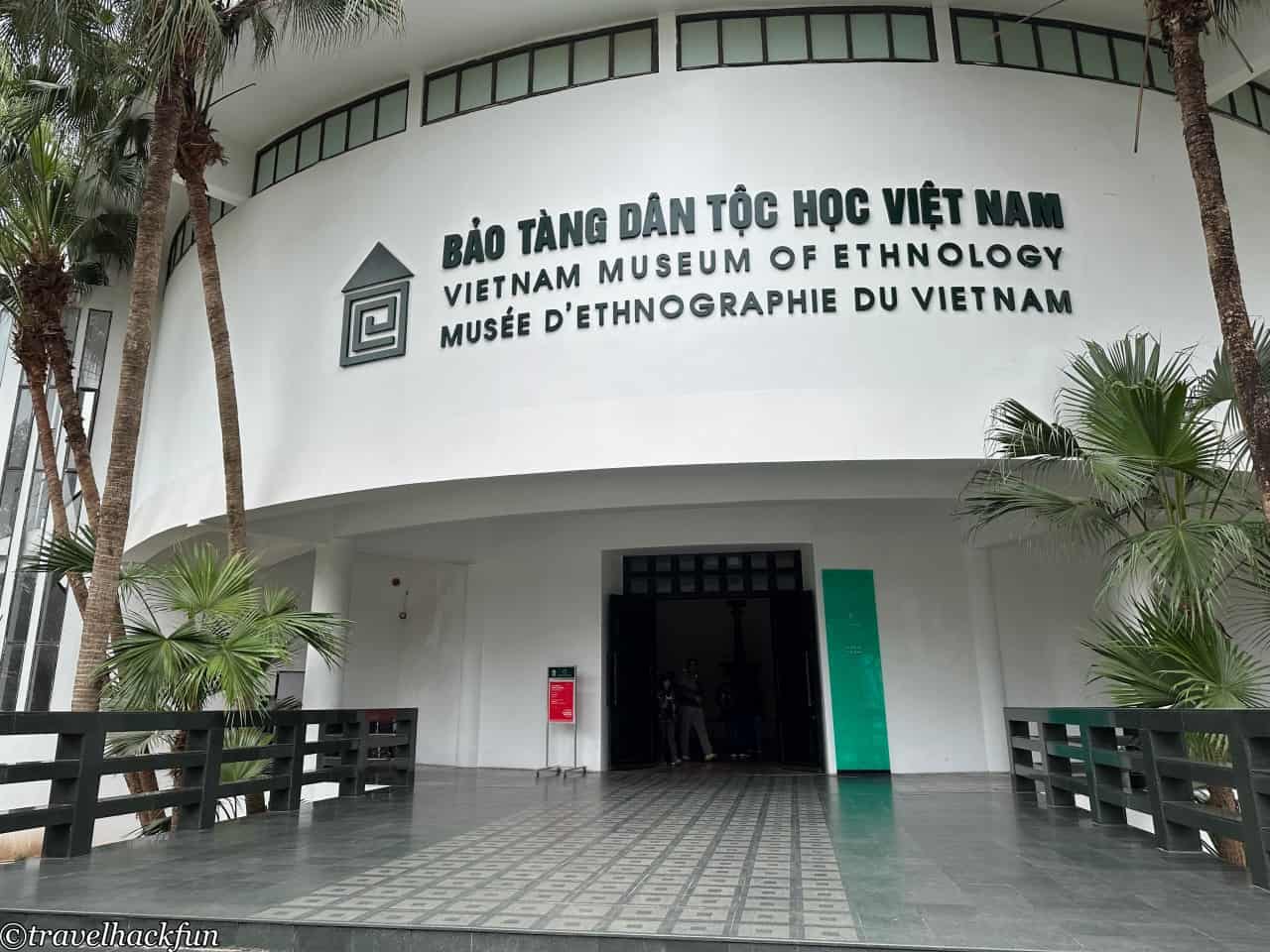



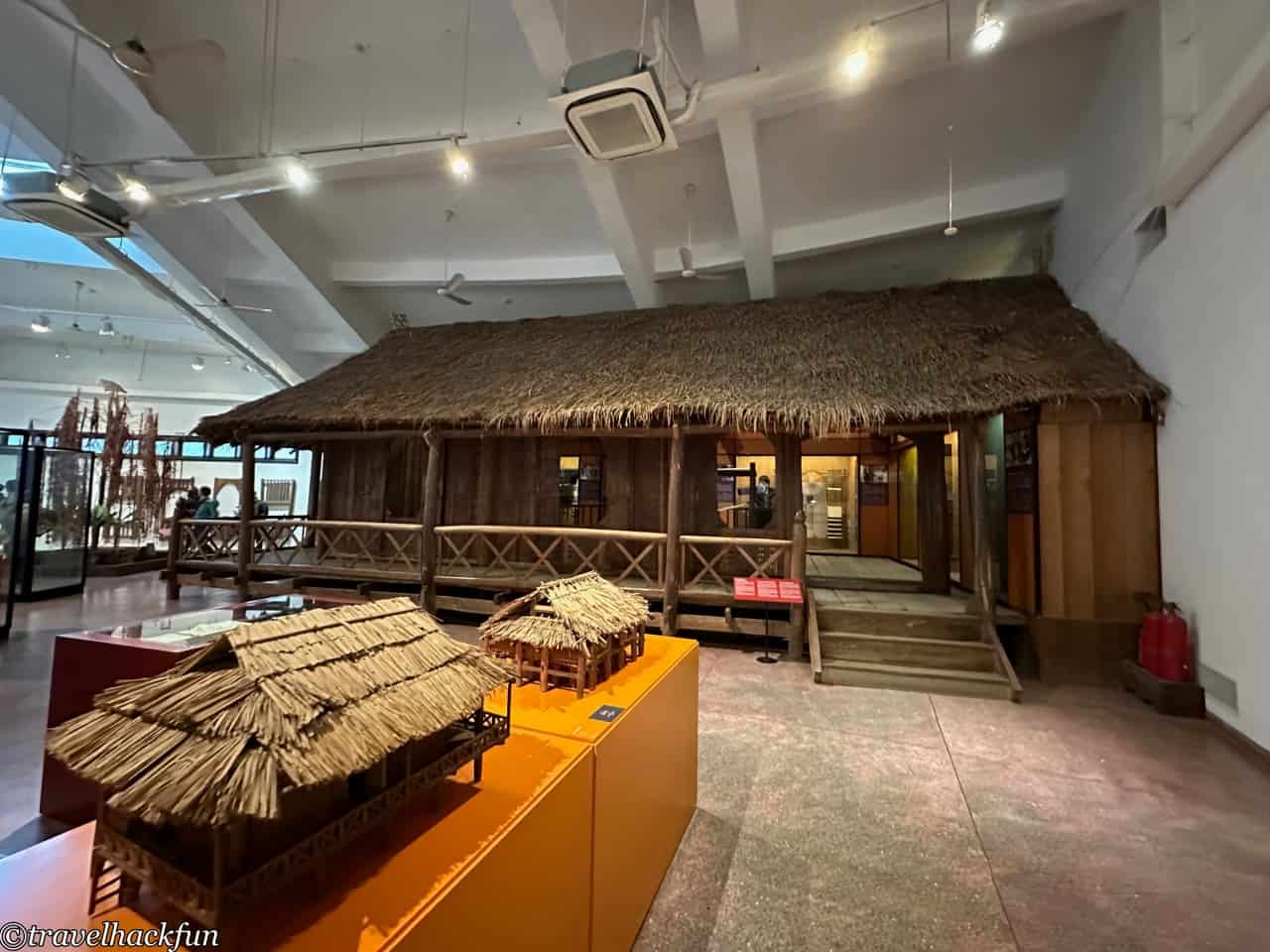
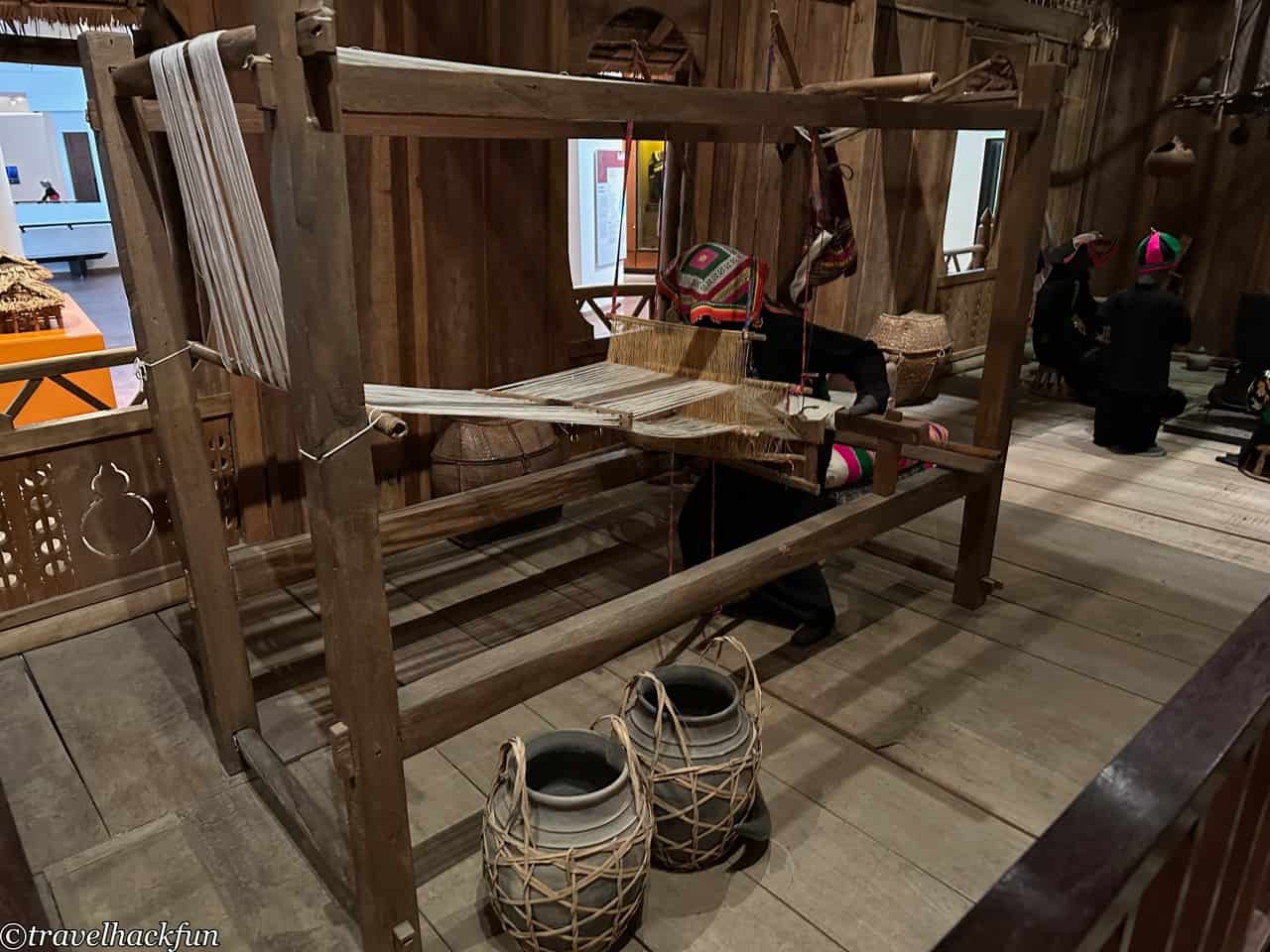
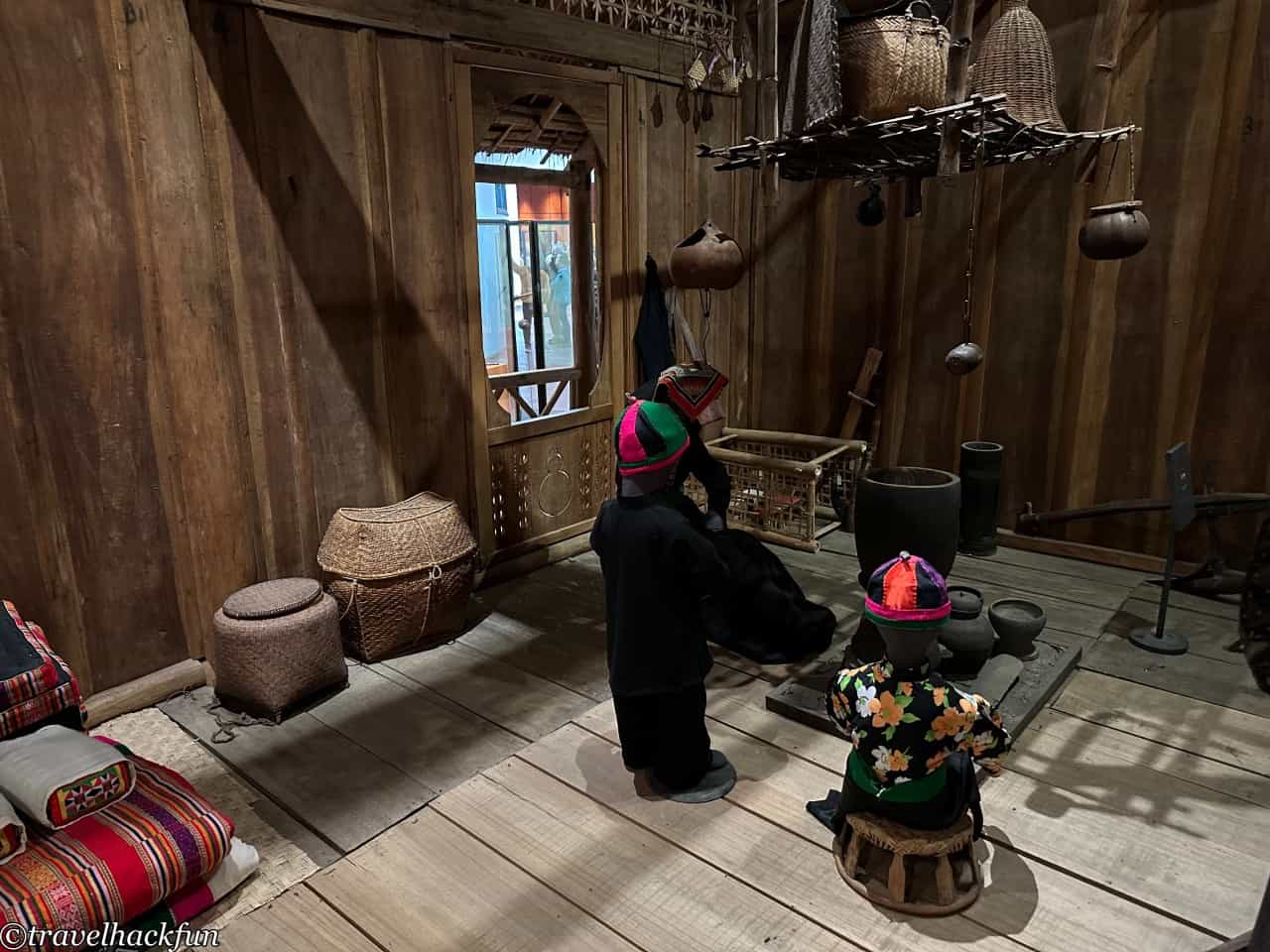
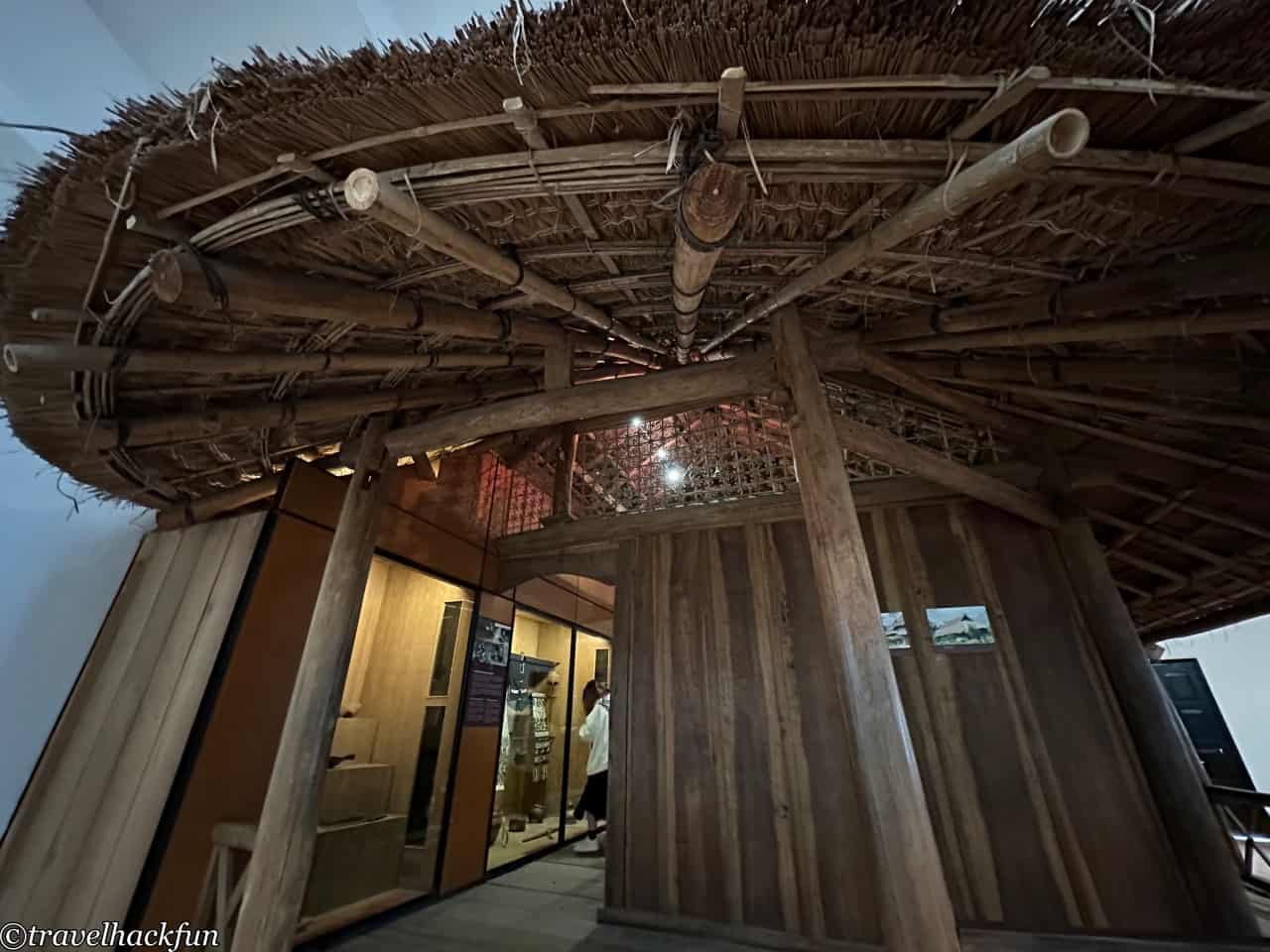
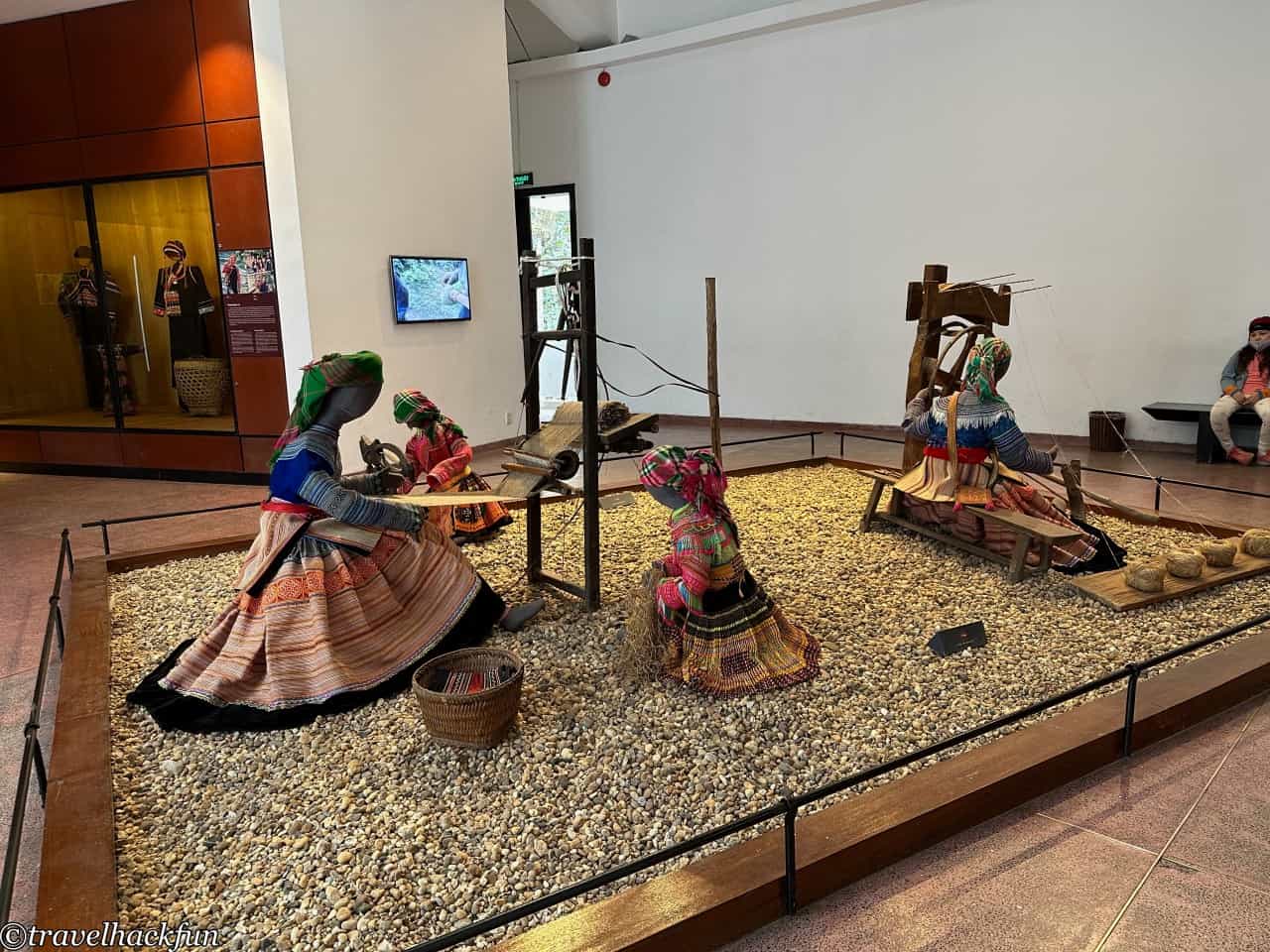
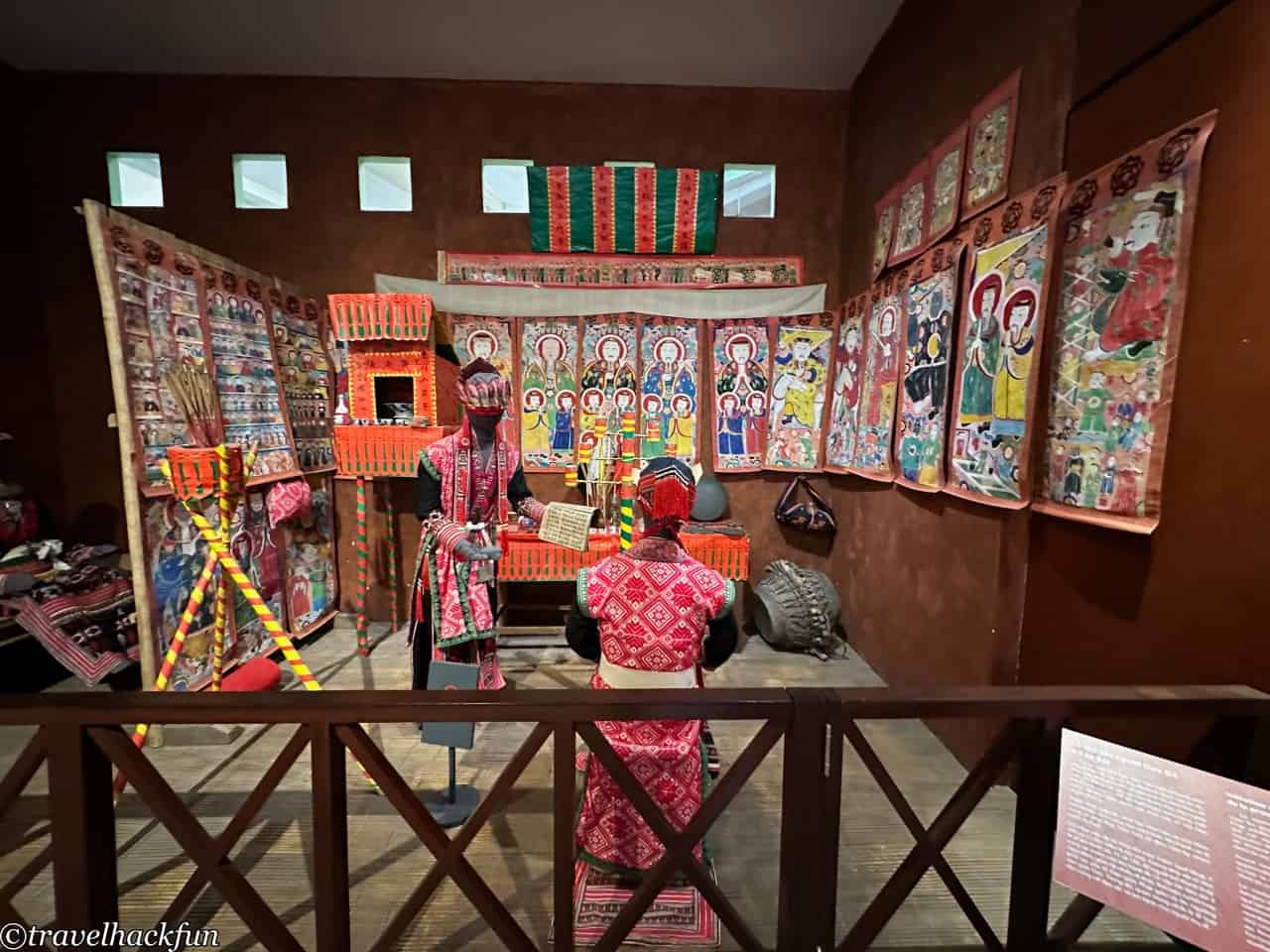
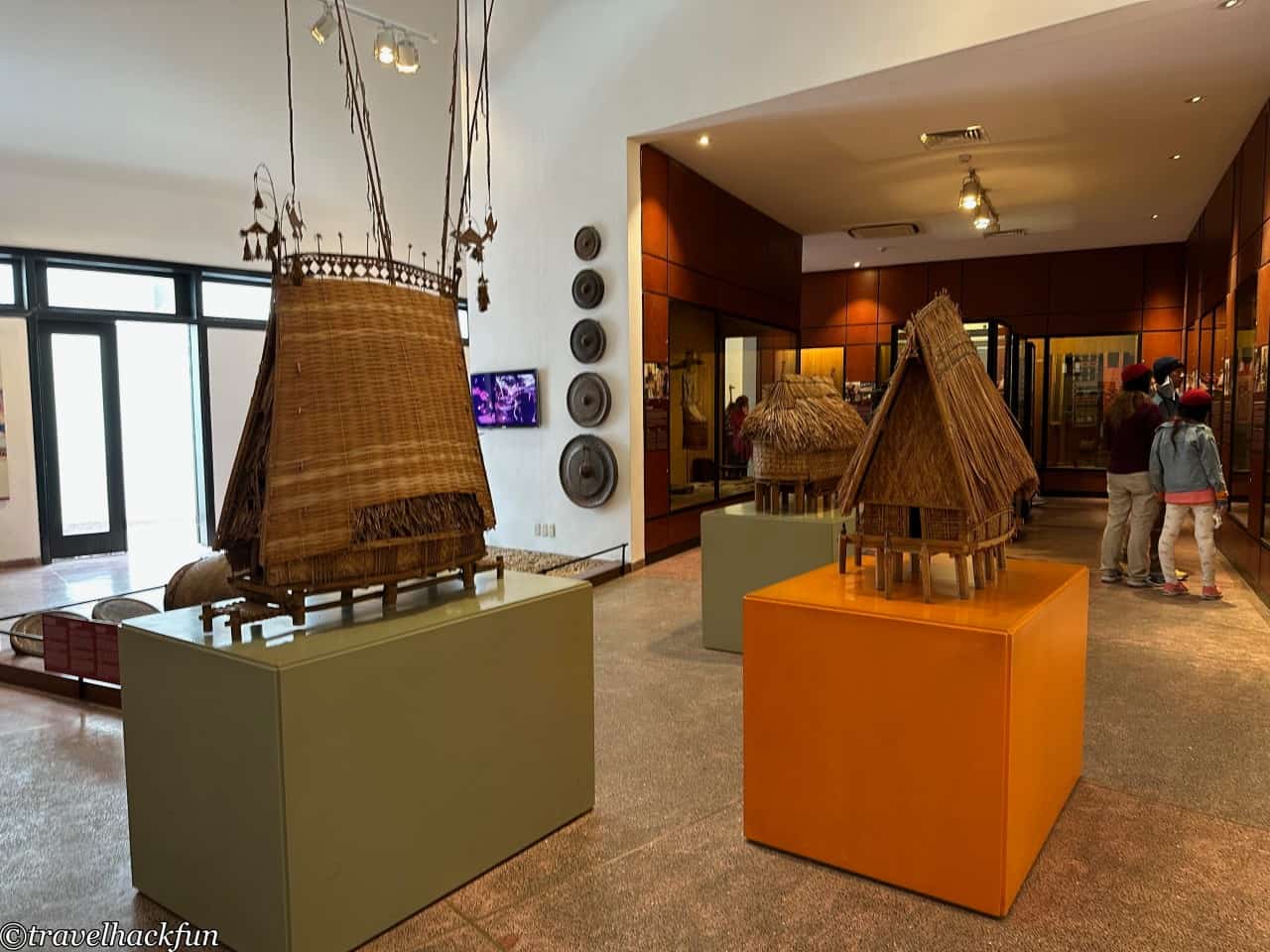
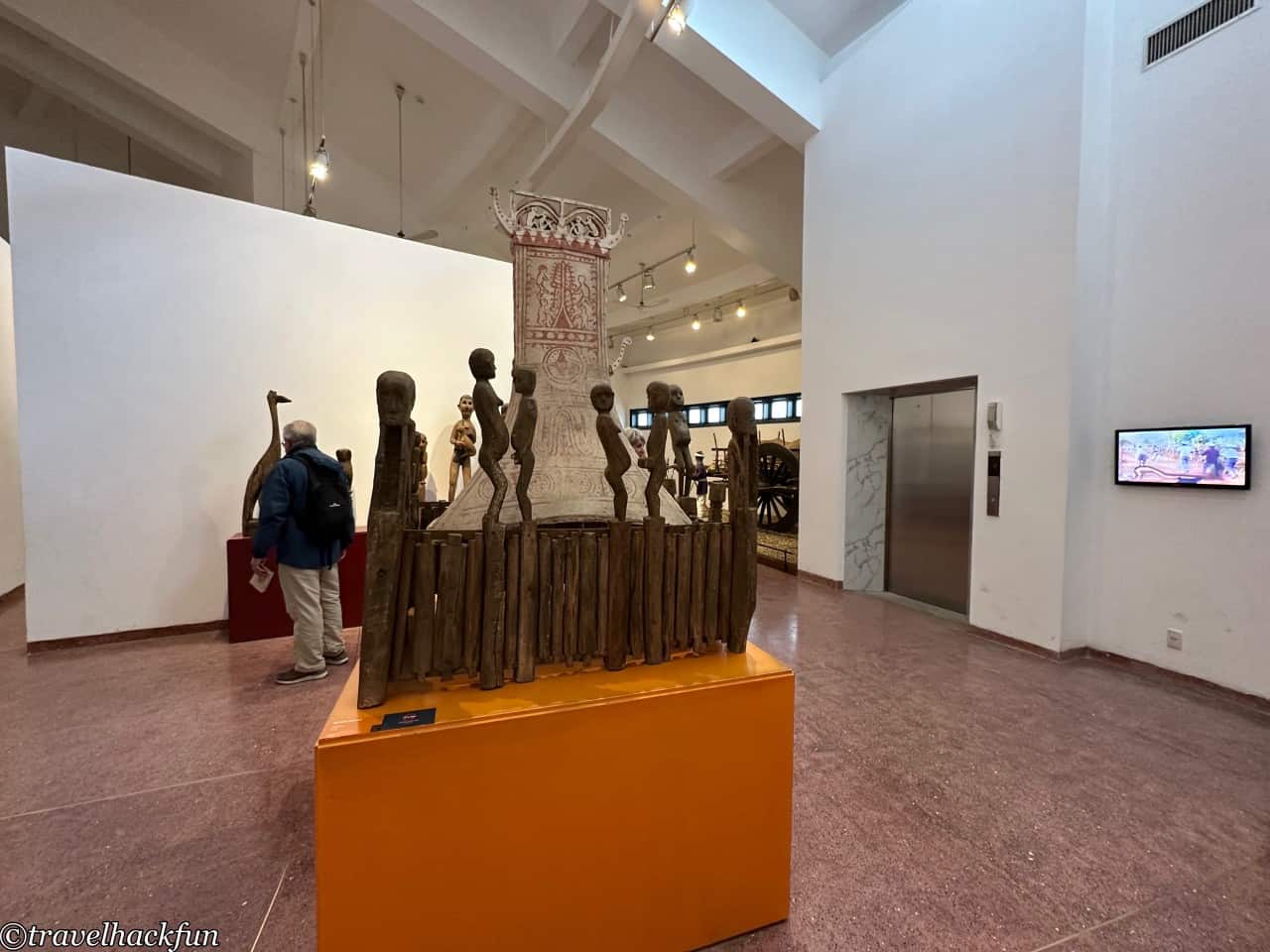
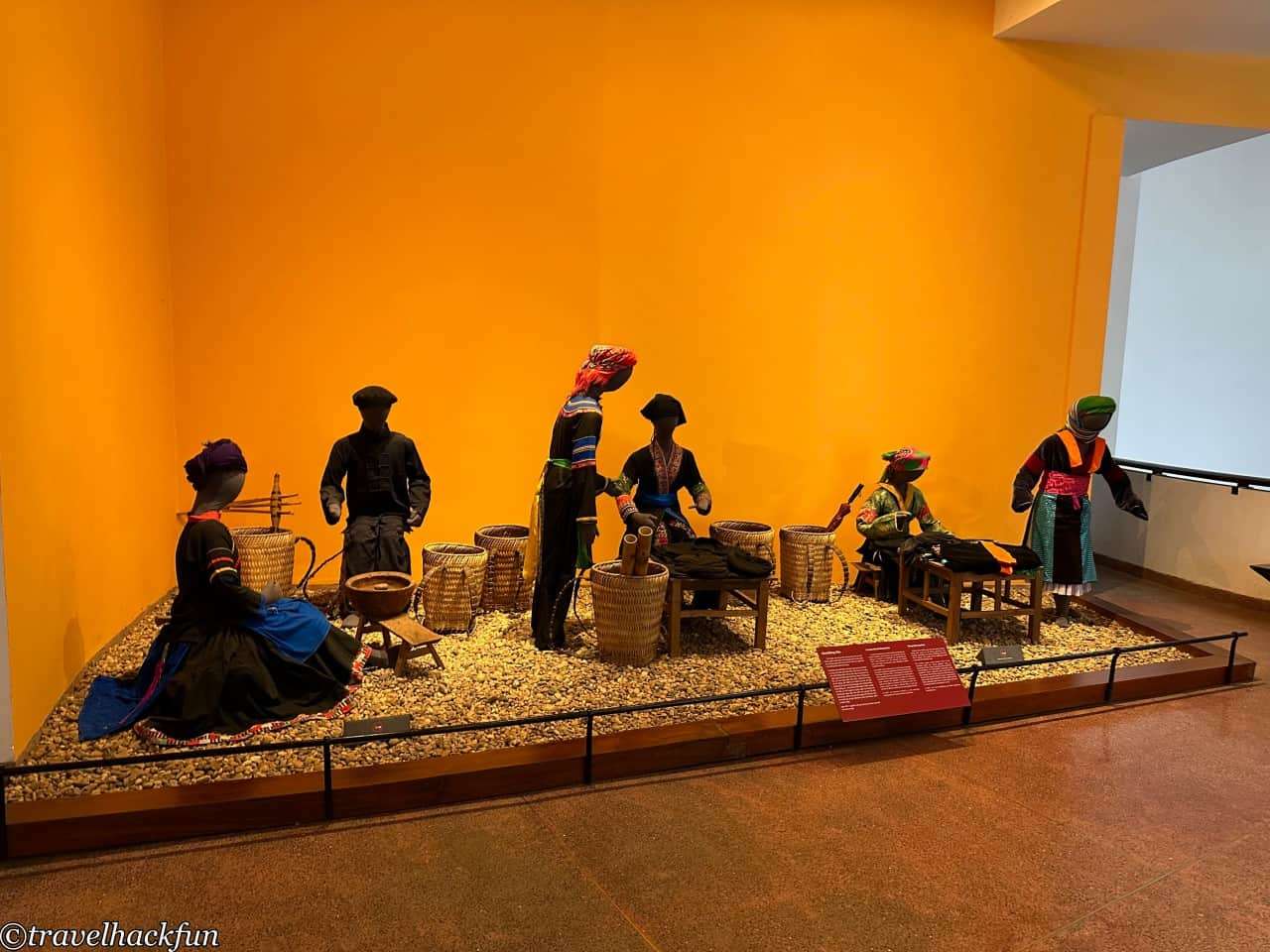
Outdoor Exhibition
The outdoor exhibition area recreates typical village architecture and living scenes of more than ten different ethnic groups, allowing visitors to immerse themselves in ethnic cultures, which I find to be the most interesting part. We can enter these houses and explore the interiors. Additionally, there are introductions to scenes like the water puppet theater, communal houses, village gates, and stone paths, providing insights into the daily life and social organization of the ethnic groups, making it highly worth visiting.
Among the exhibits, a few left a deeper impression, such as the Cham House we first visited. The interior feels quite interesting, with the house raised off the ground and the walls made of earth. The living room features wood carvings and ancestral tablets for worship. This ethnic group is also located in the northern part of Vietnam, seemingly influenced by Chinese Han culture to some extent.
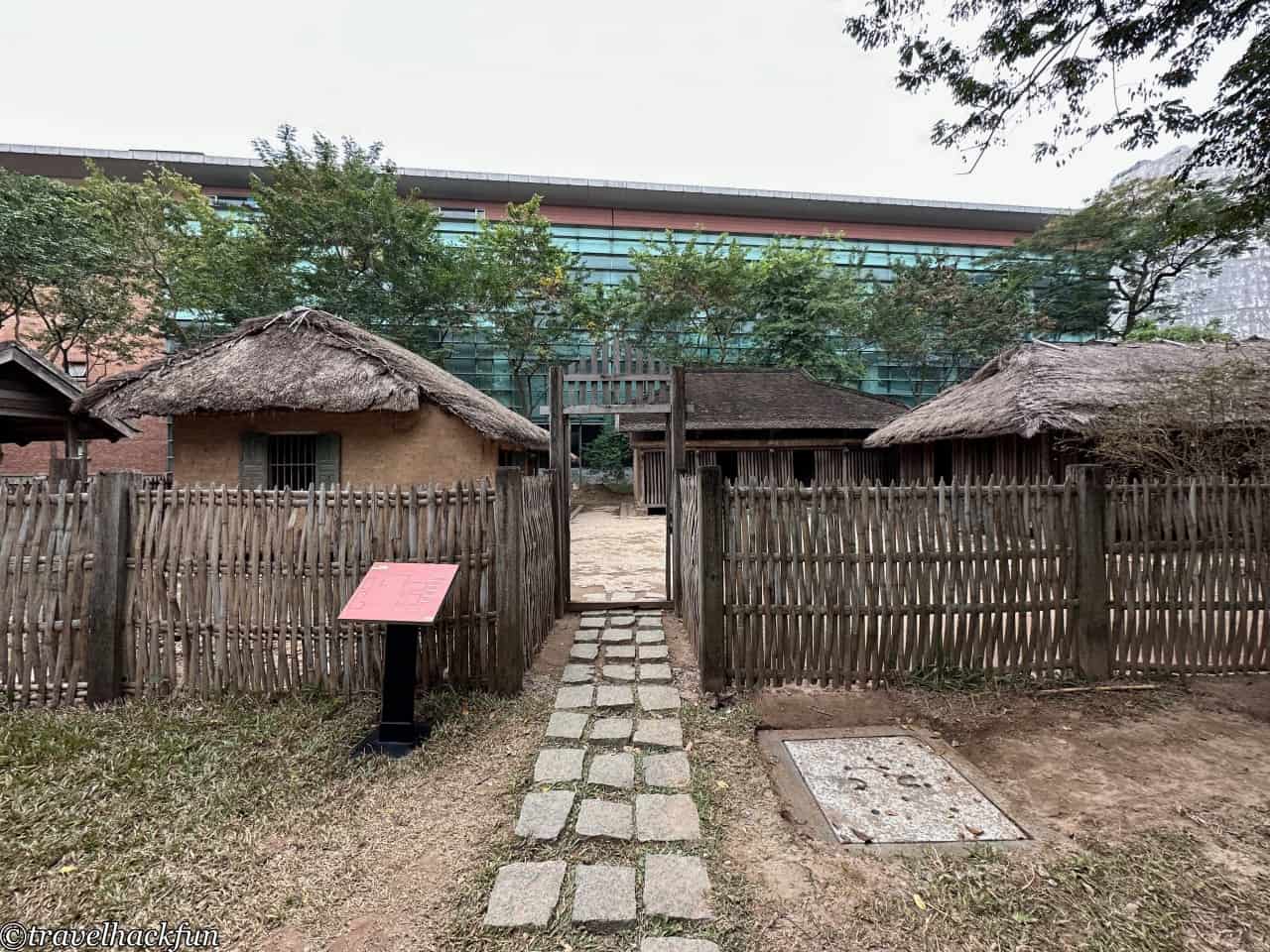

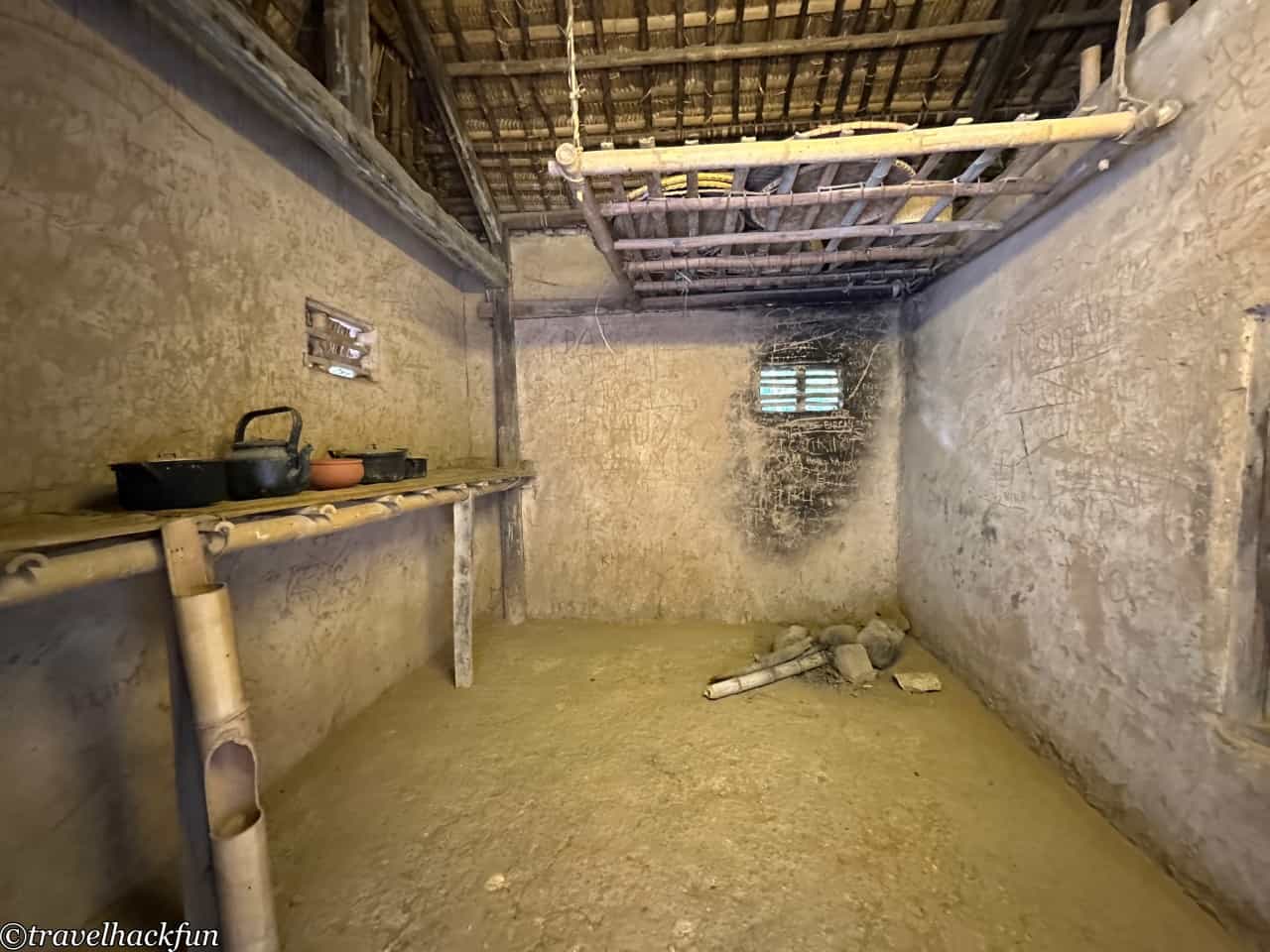


Viet Home represents the Viet, the largest and dominant ethnic group, and its structure closely resembles the form of traditional Chinese houses.
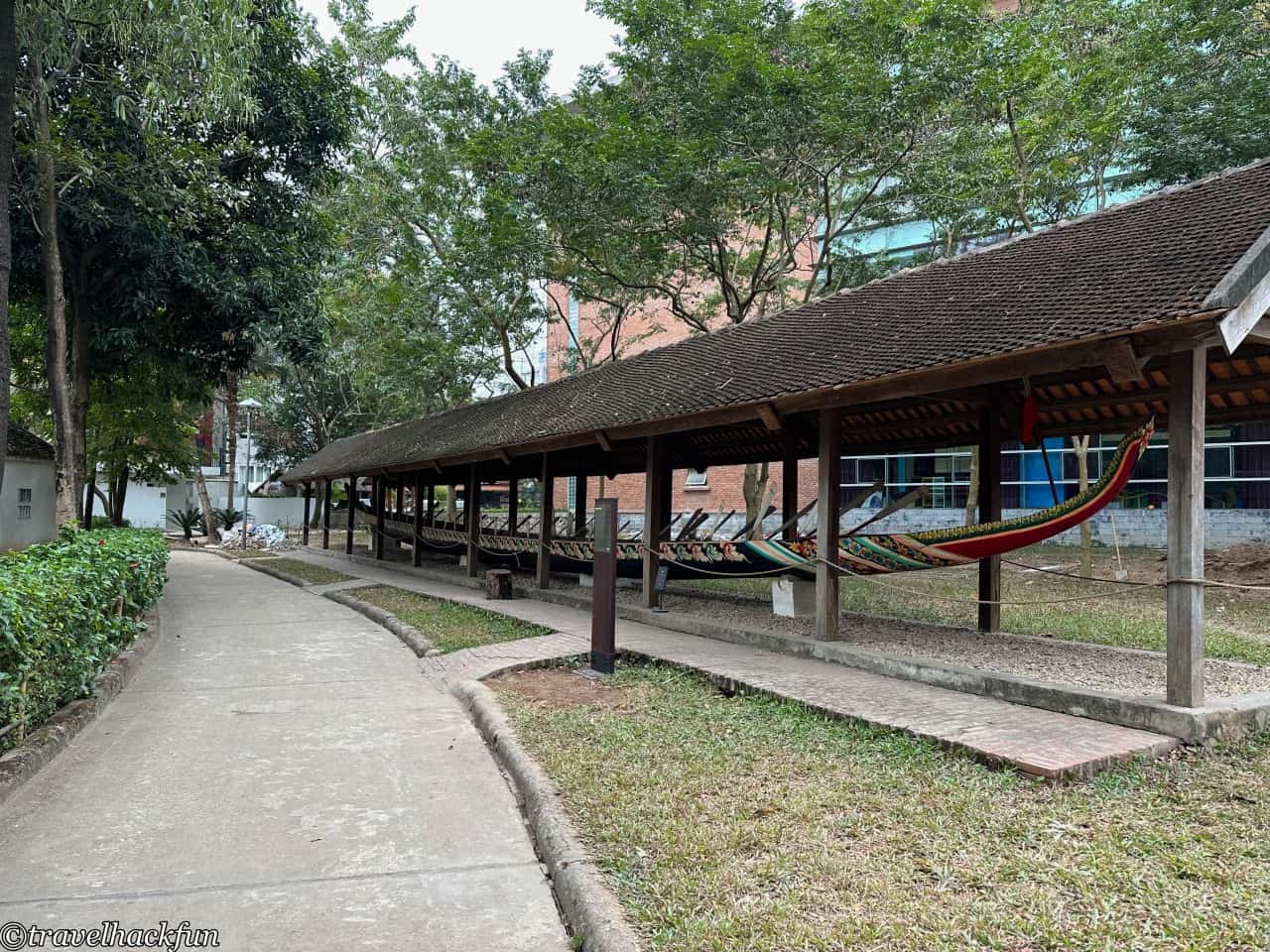
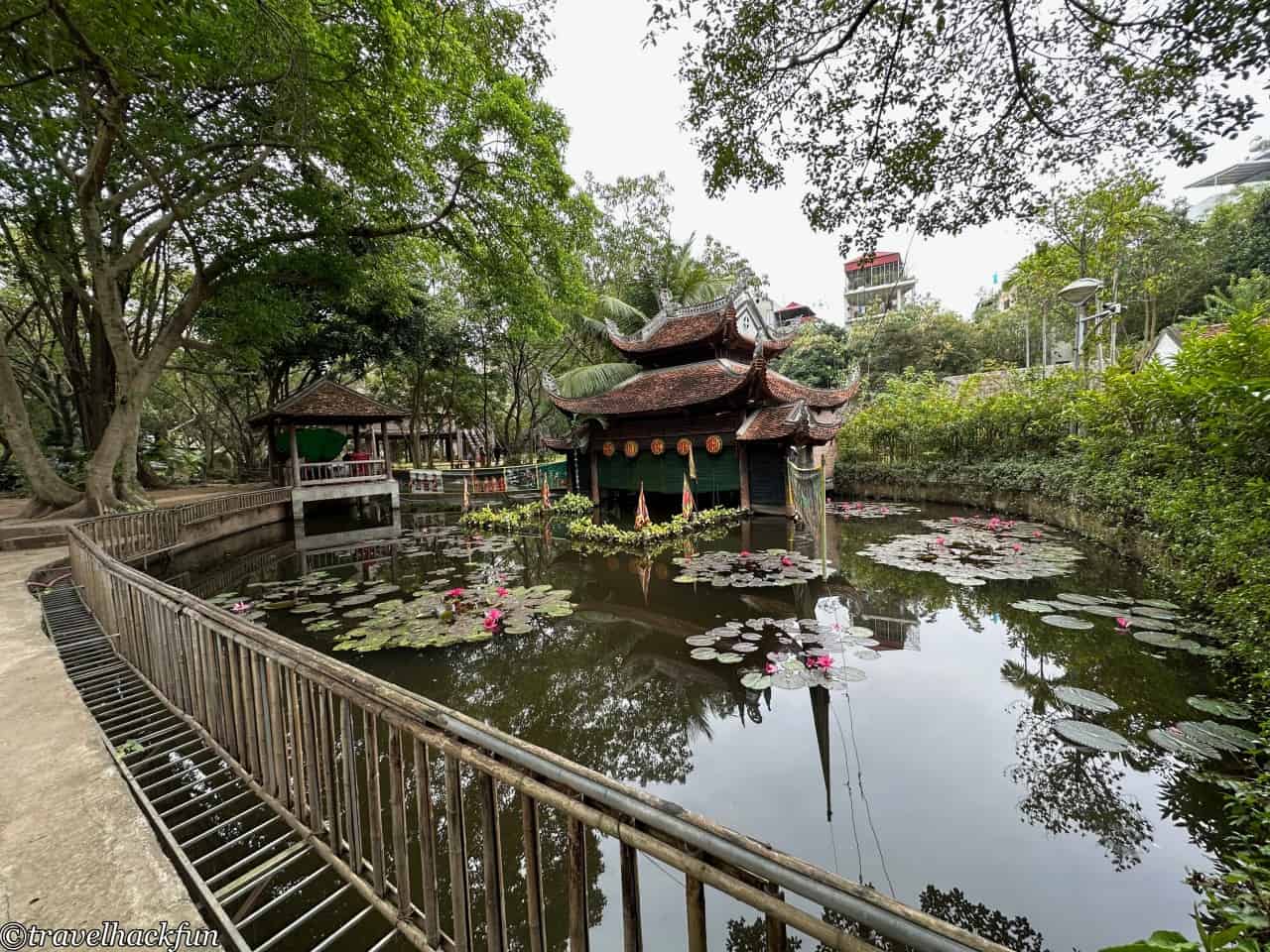
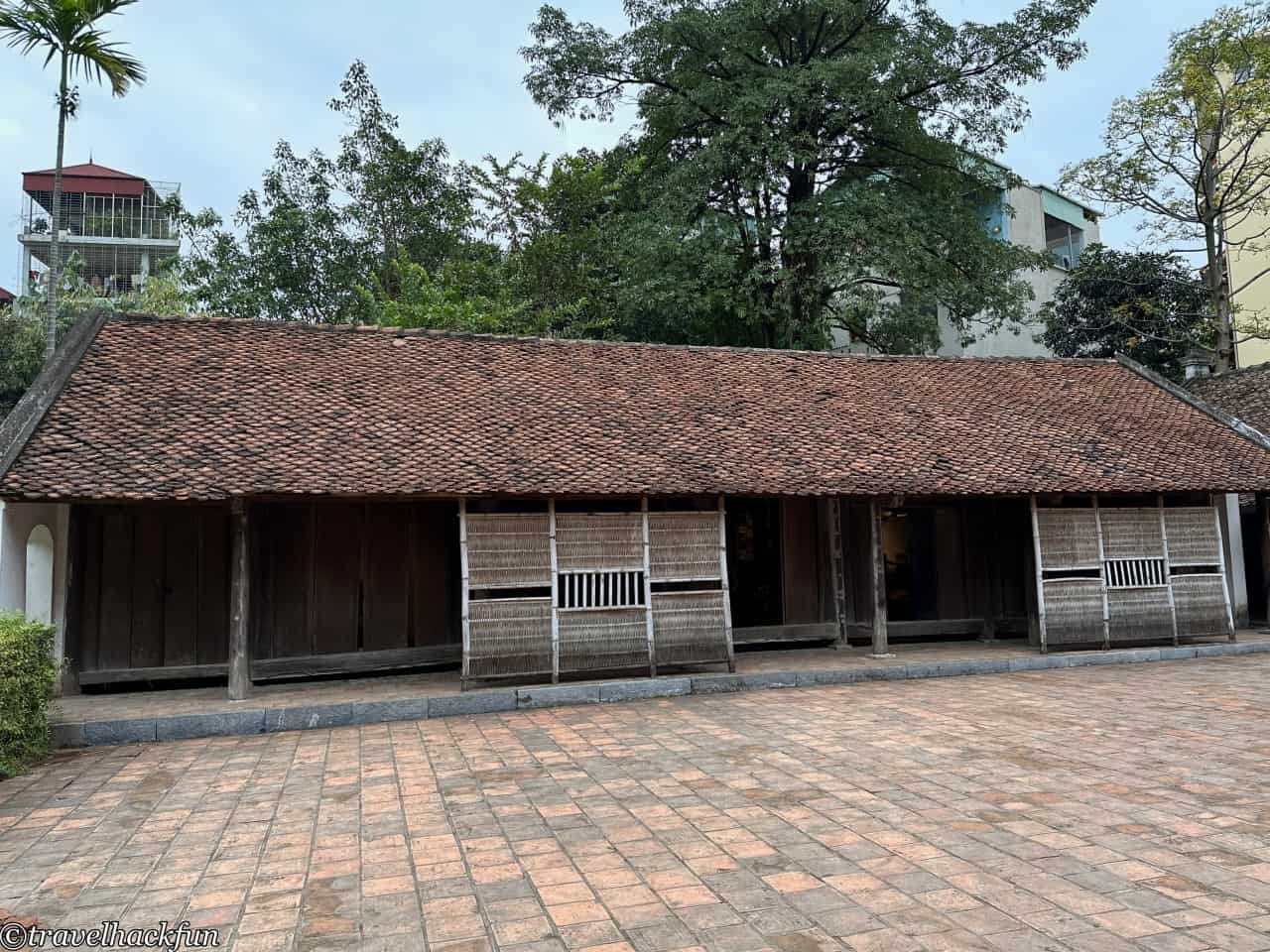
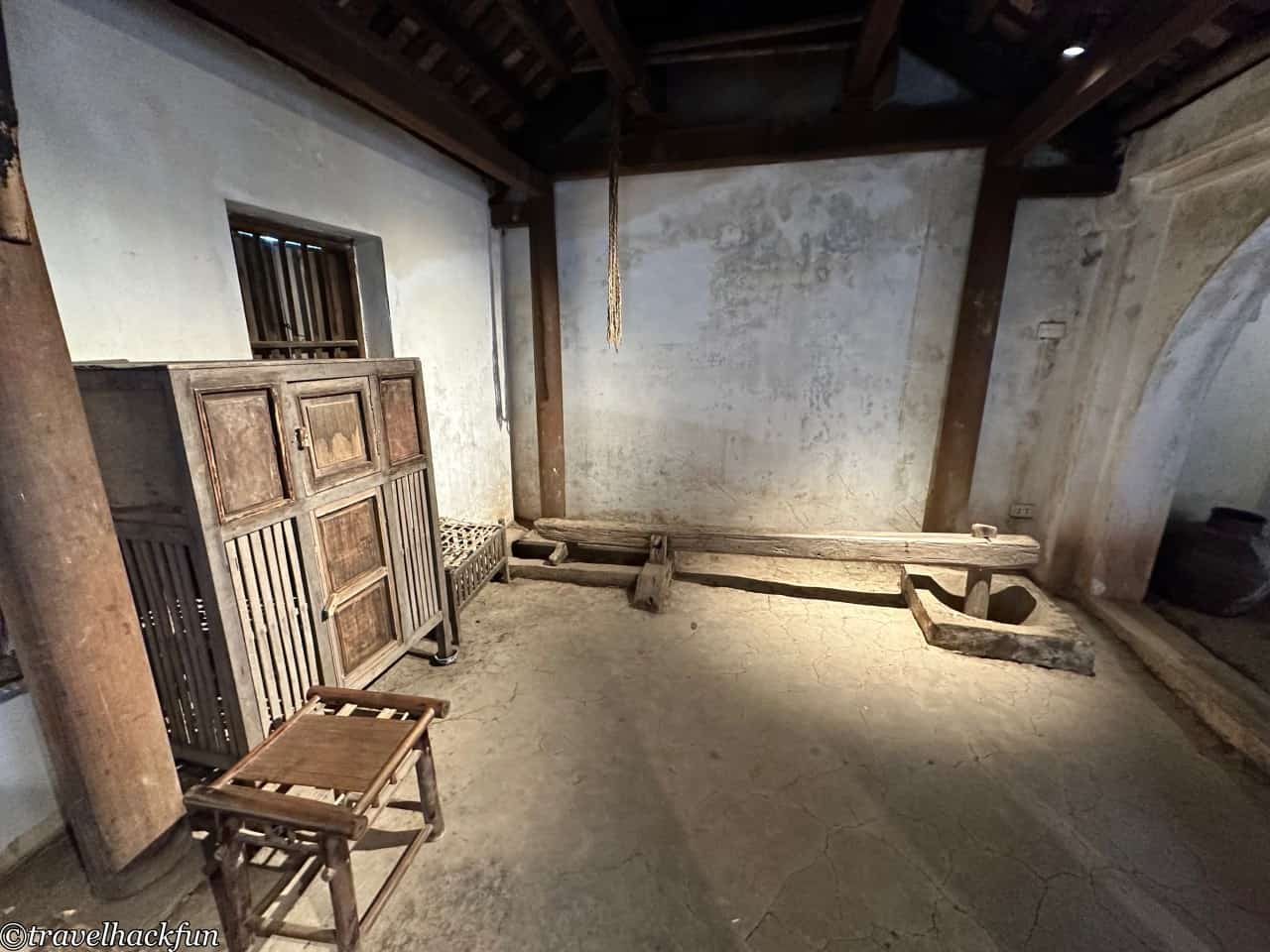
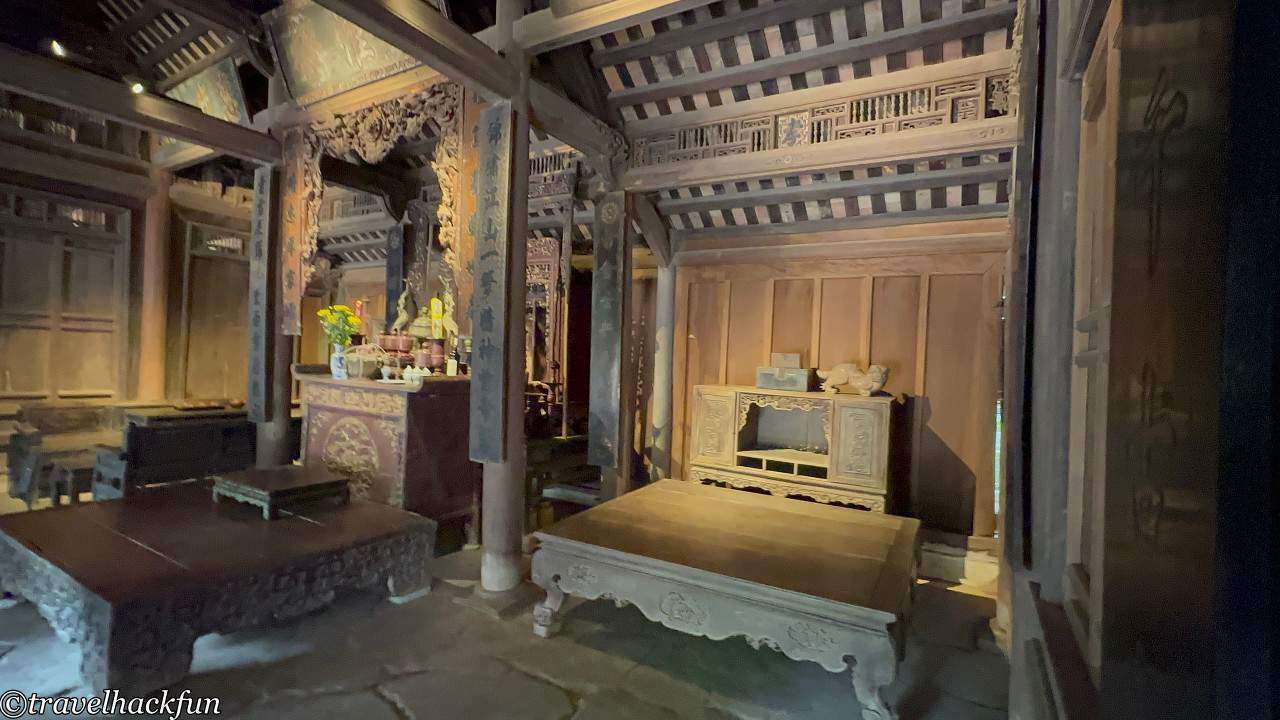
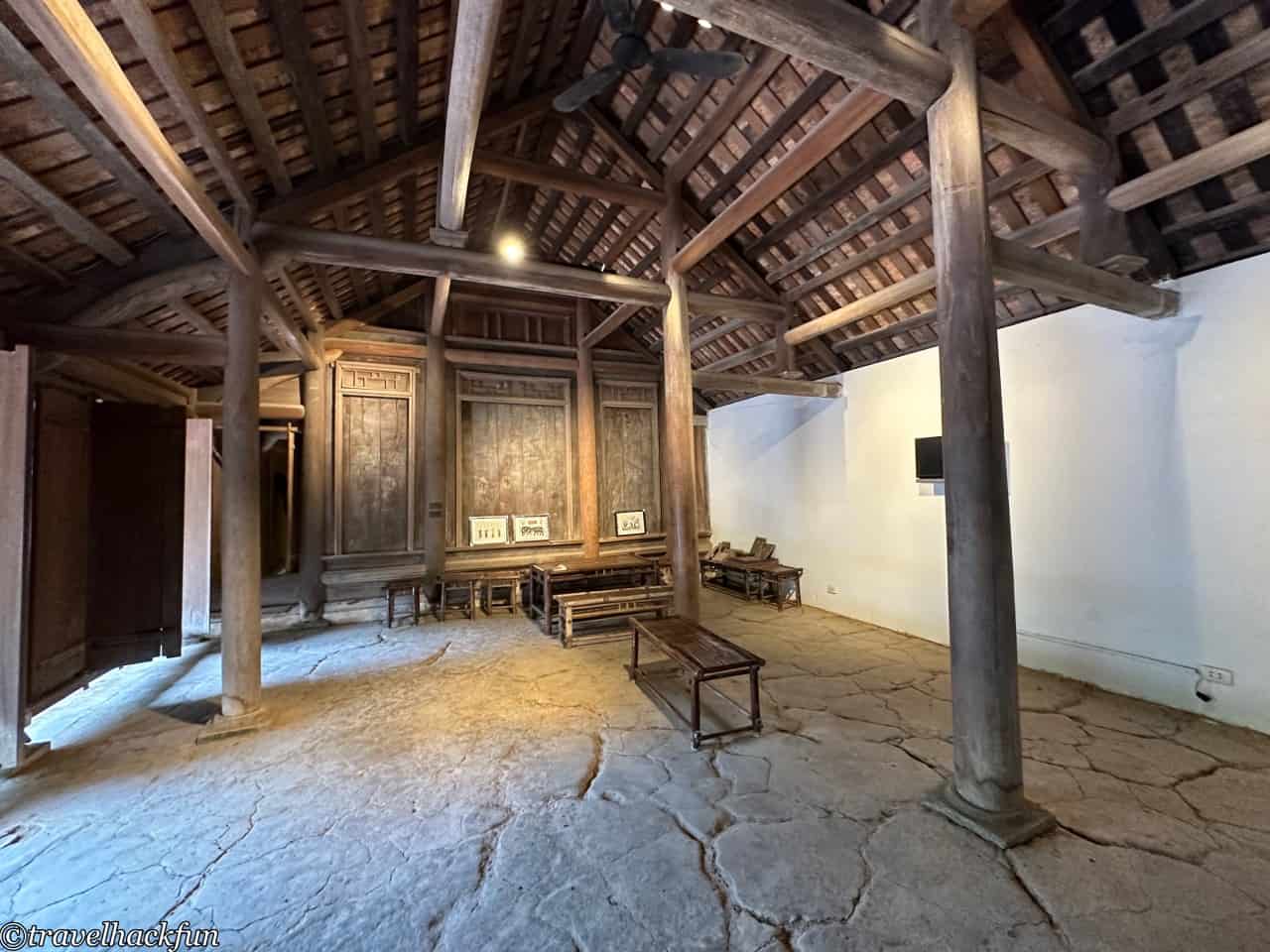
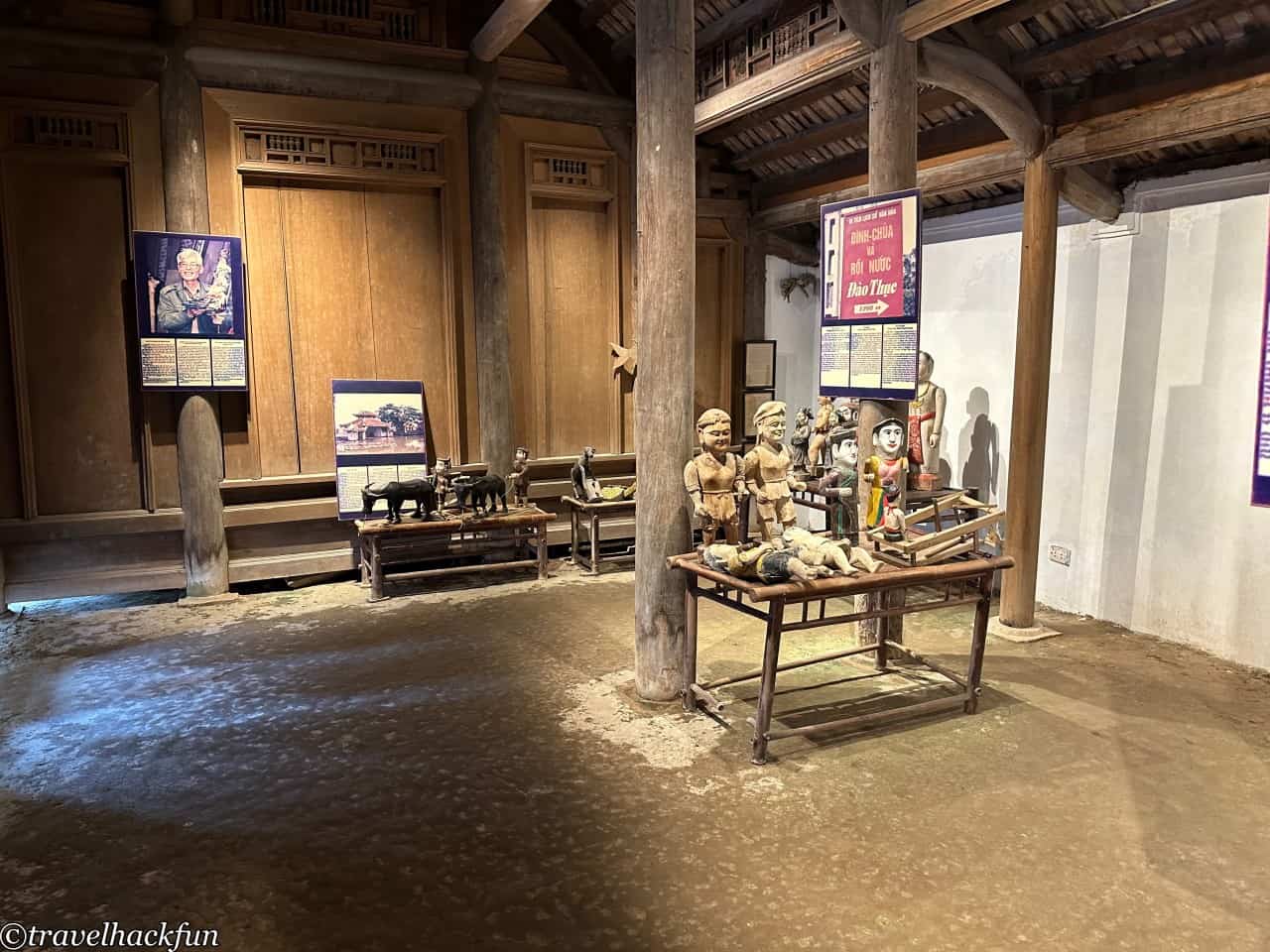
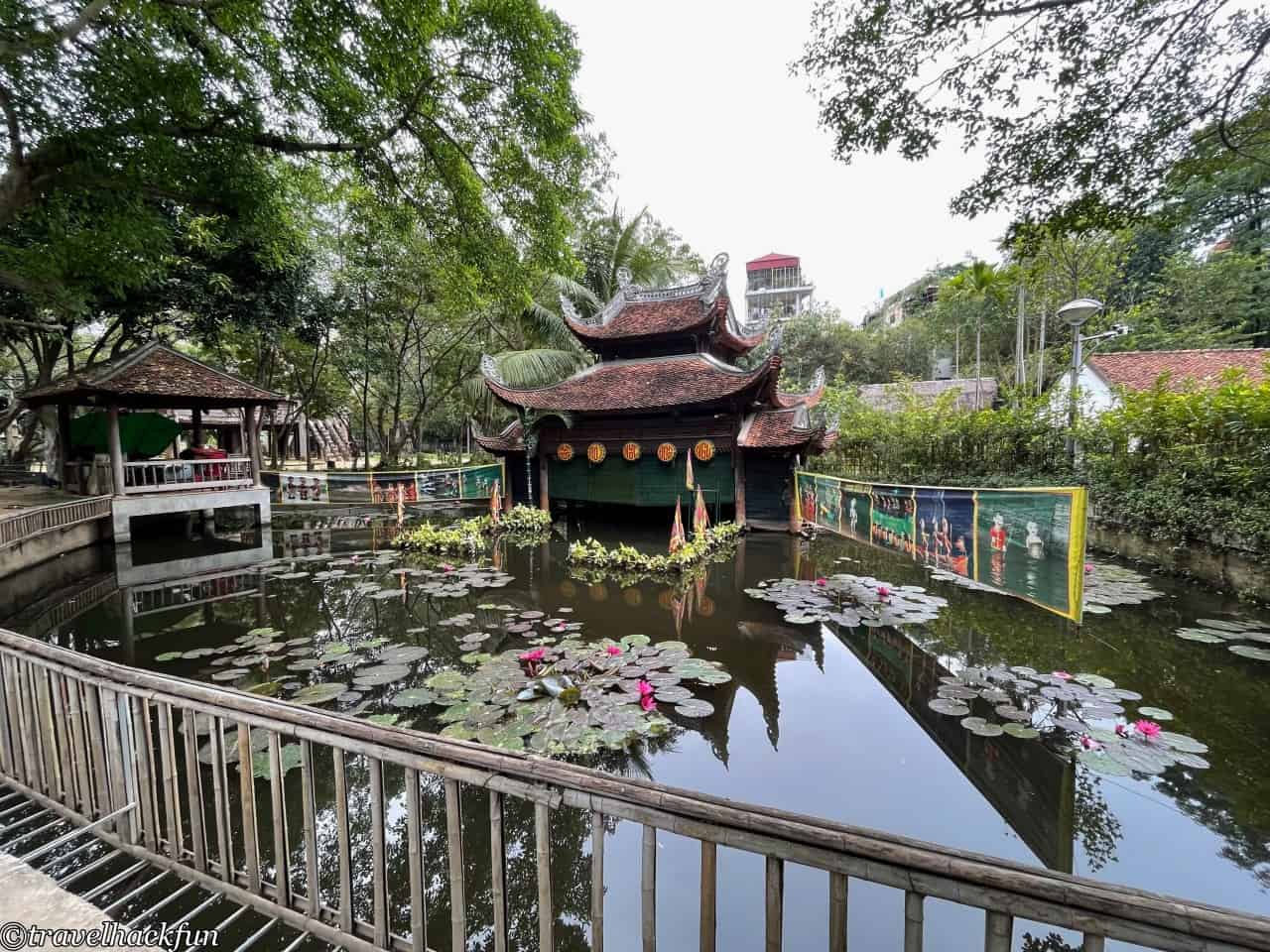
The Bhanar Communal House is what I found to be the most interesting. The communal house is over nineteen meters high and supported by eight pillars below, with general houses not allowed to be taller than it. There's a wooden staircase in front of the door, and climbing up can be quite thrilling.
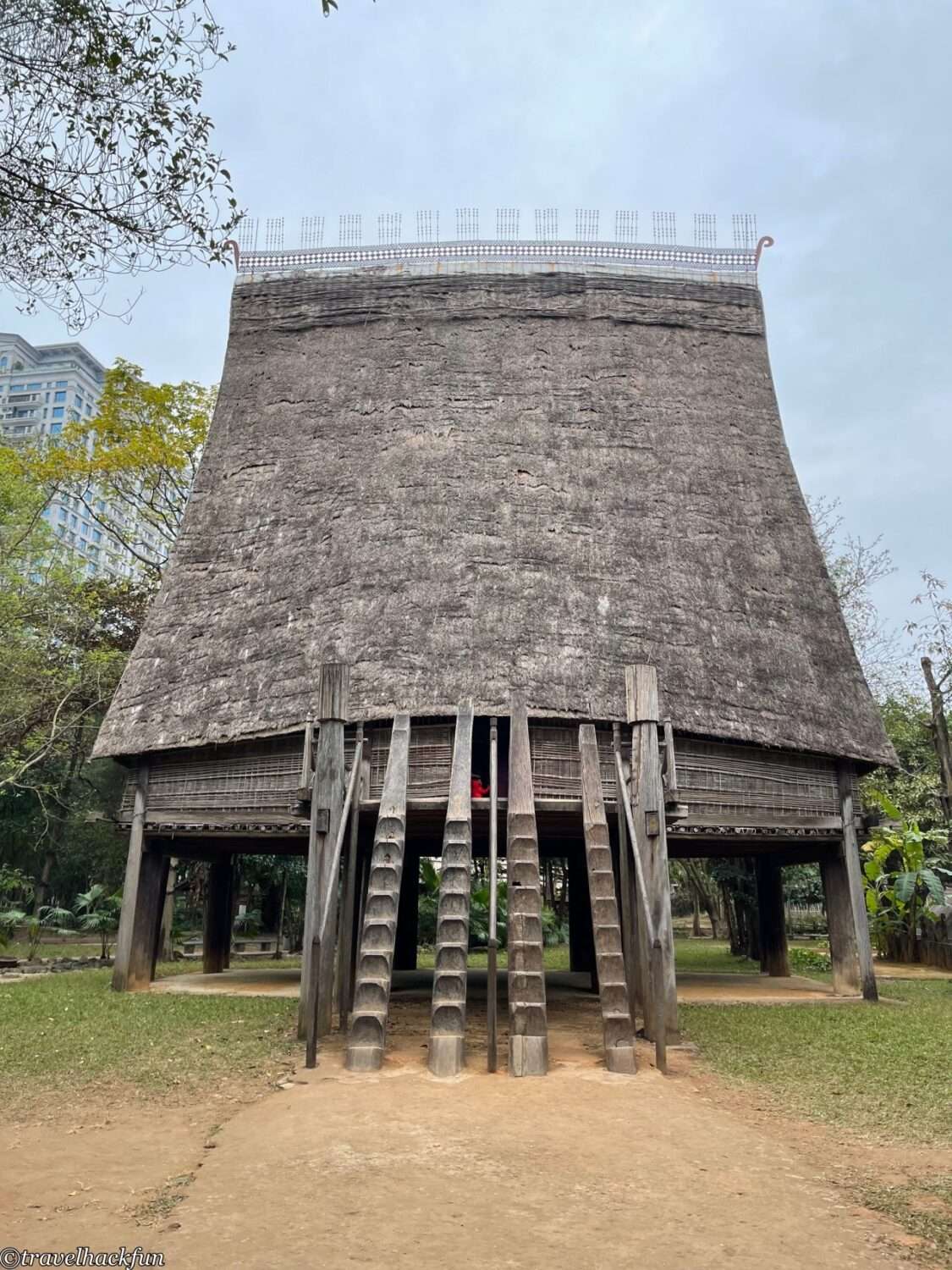
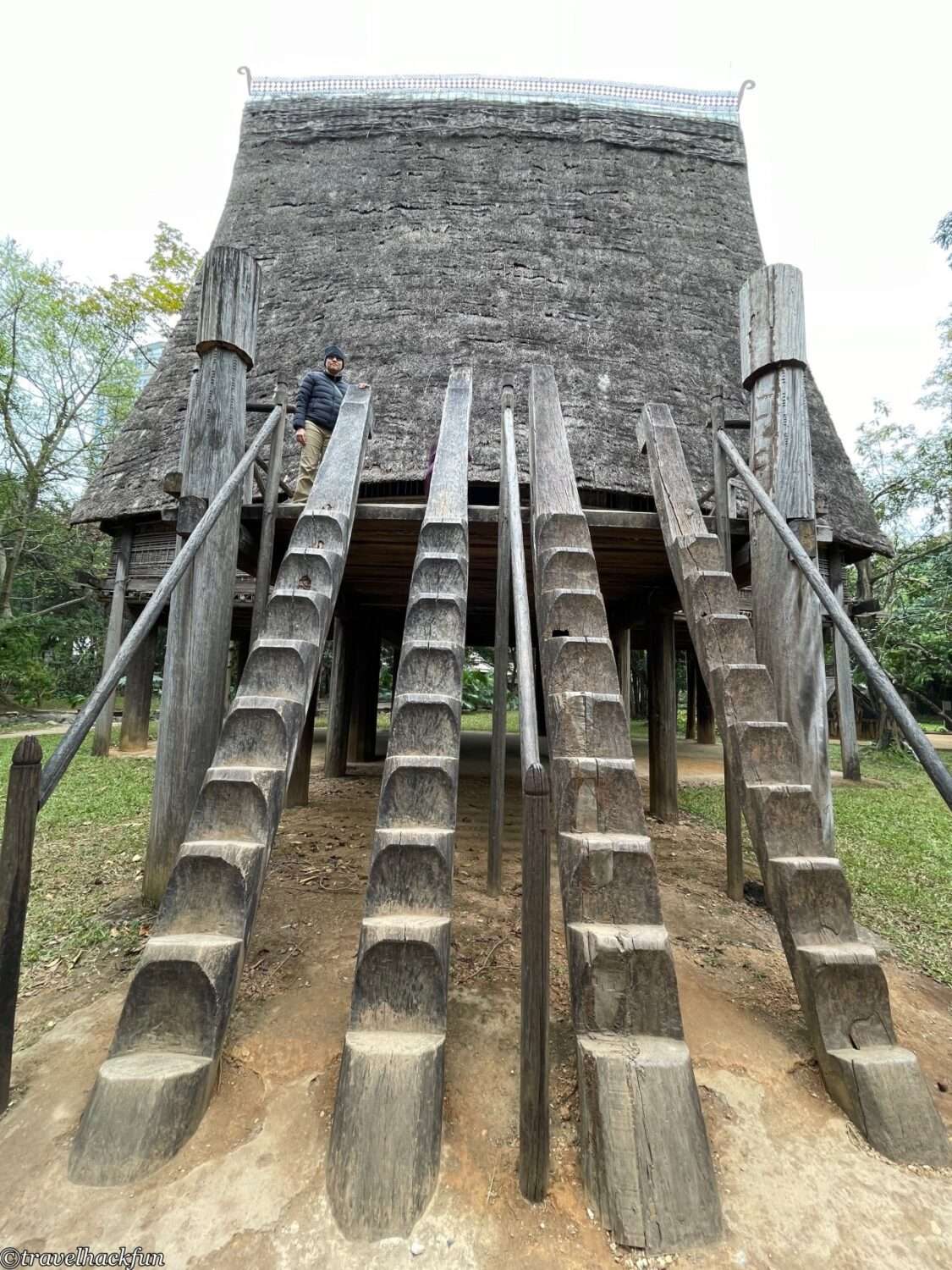
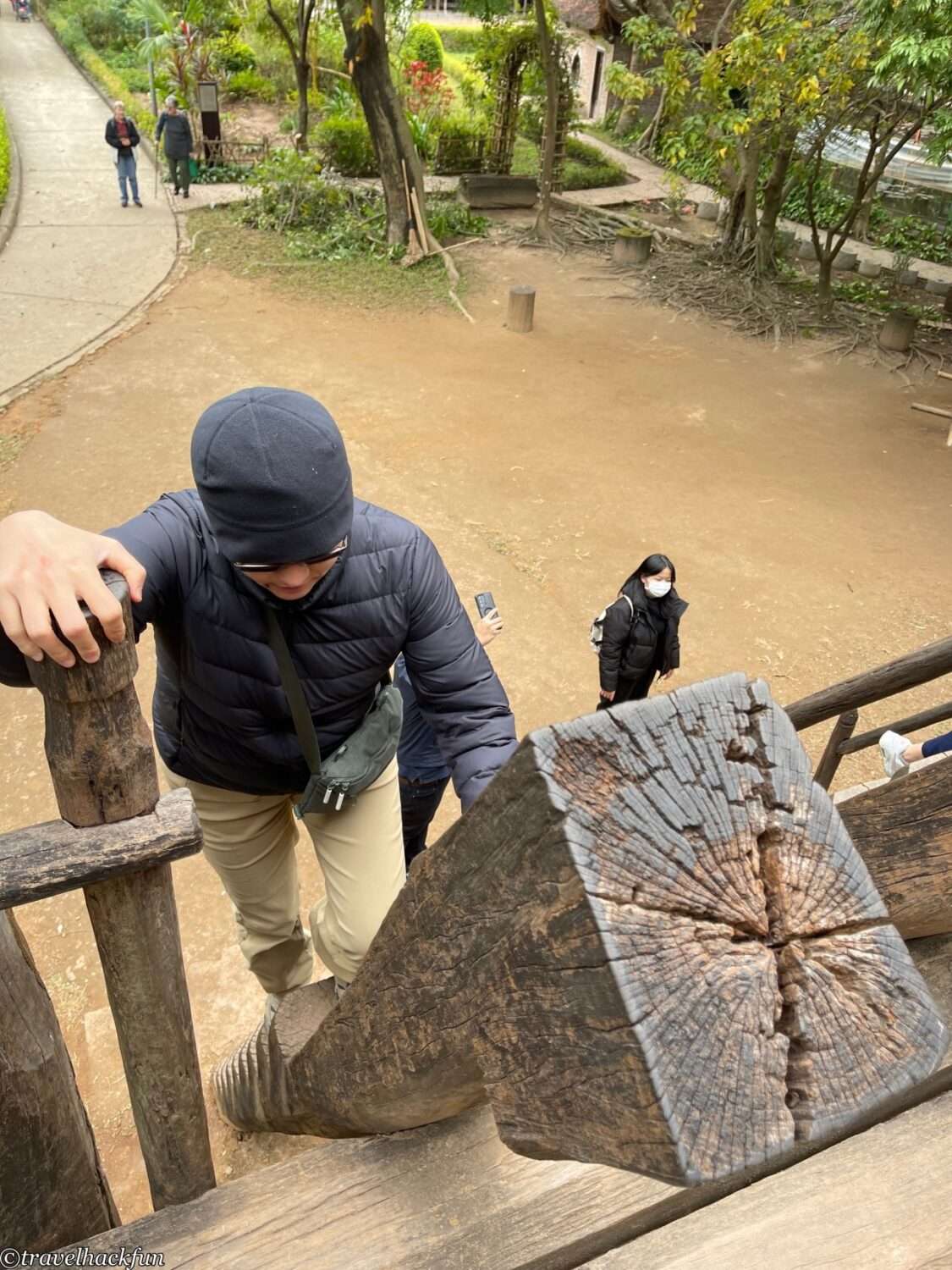
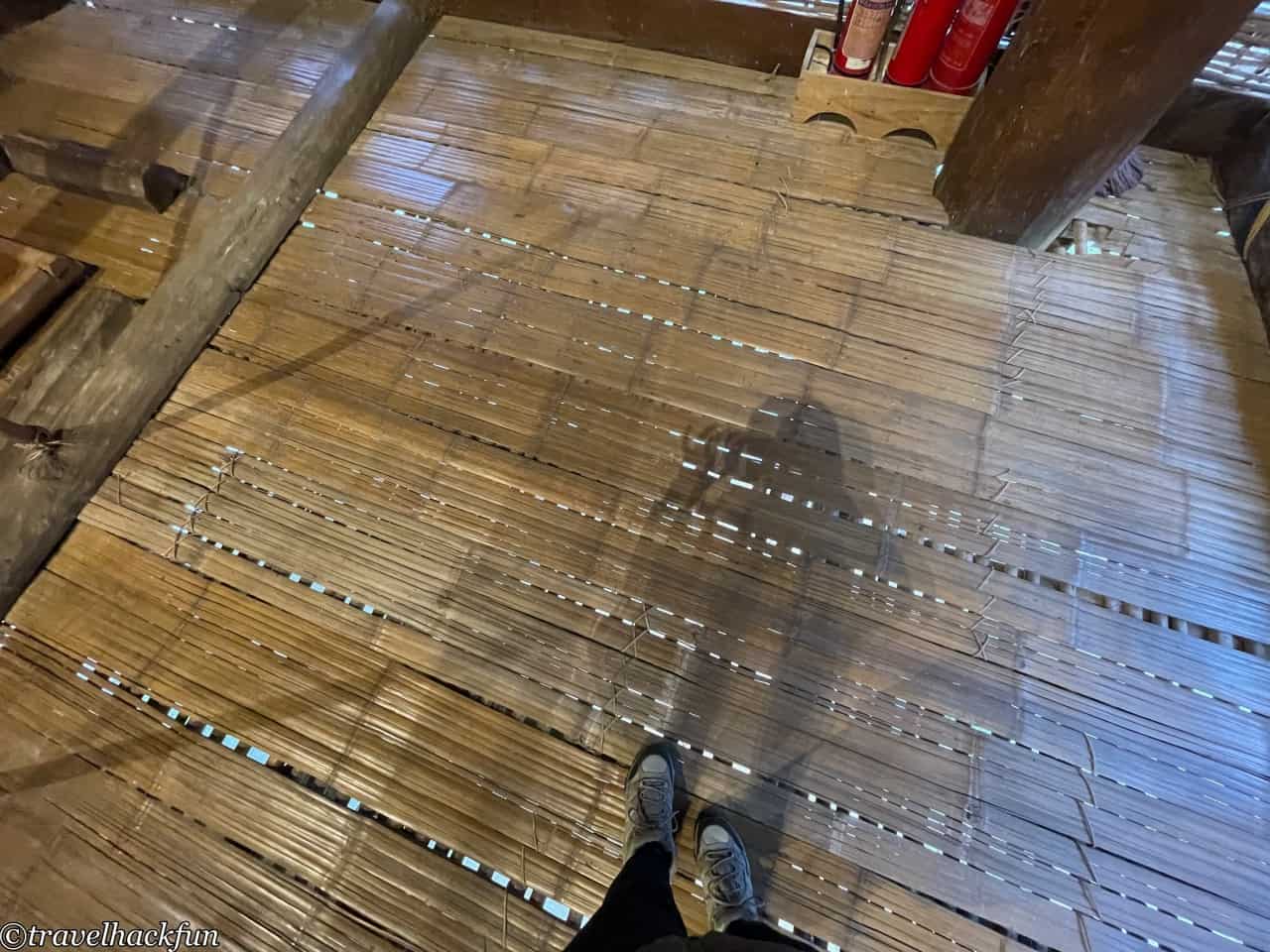
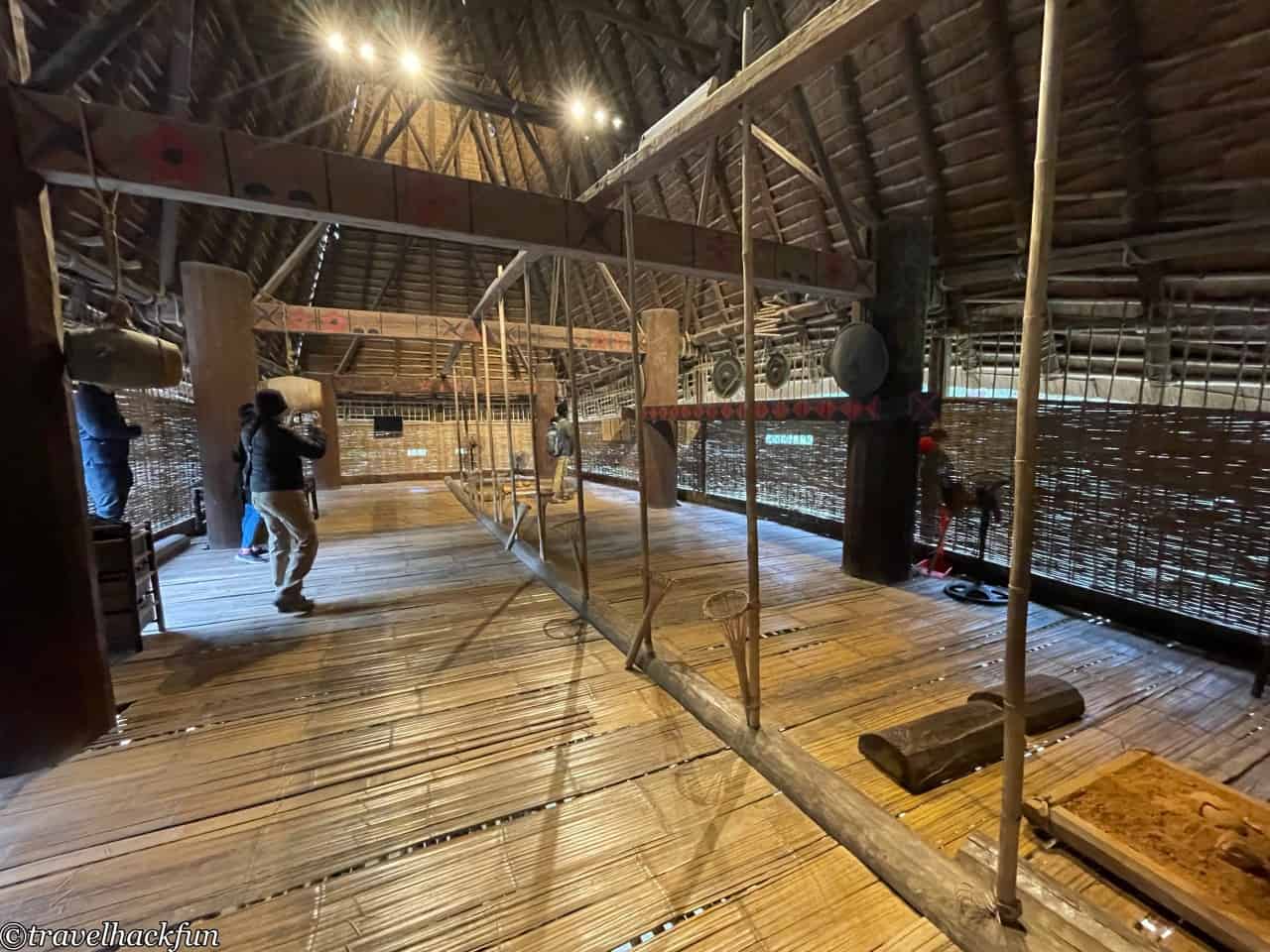
The Eye Long House is 42.5 meters long. Traditionally, the house is oriented north-south, with the entrance on the north side and the living space on the south side. The larger the family, the longer the house will be built, with some even reaching up to 200 meters in length.
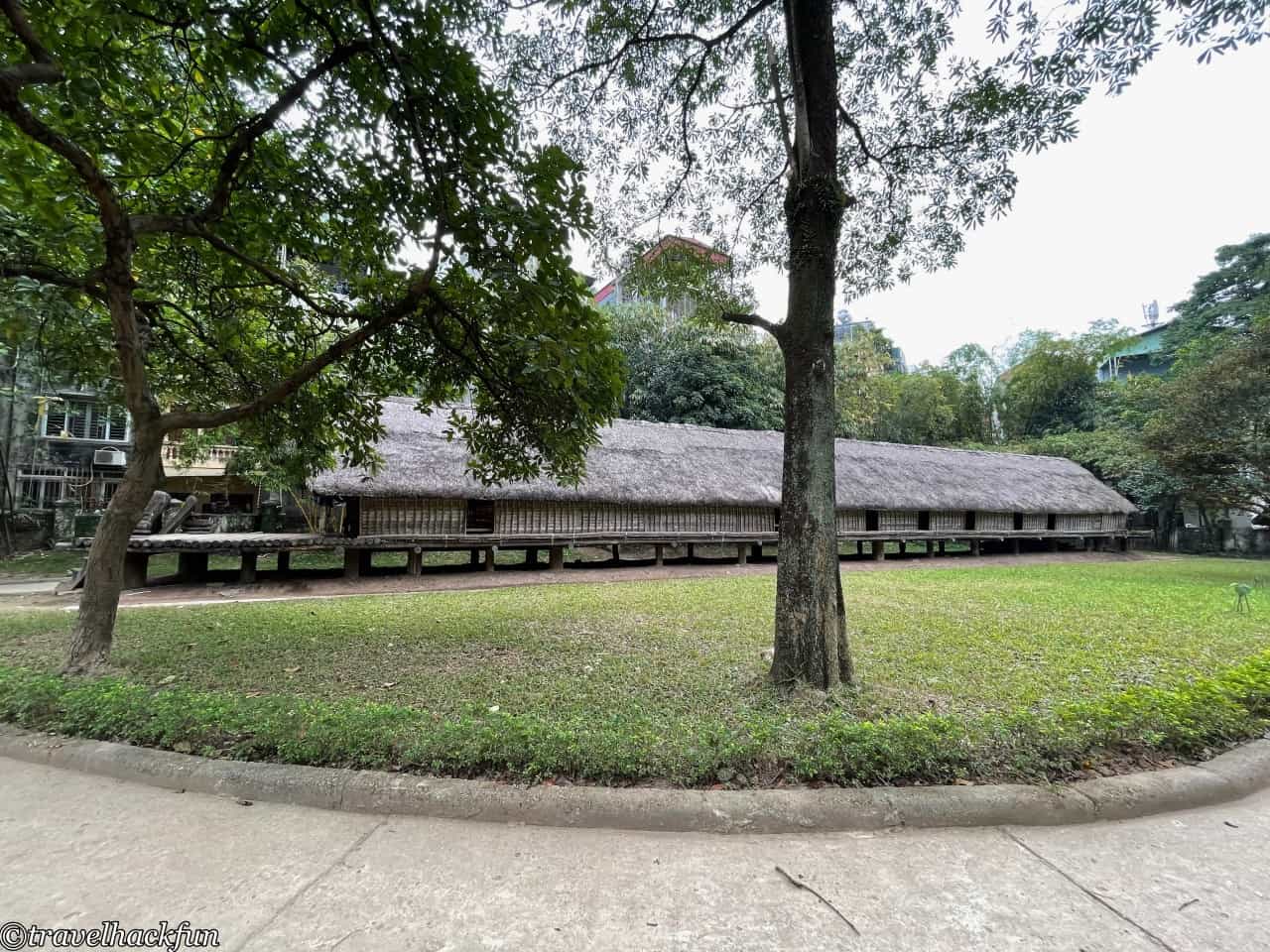
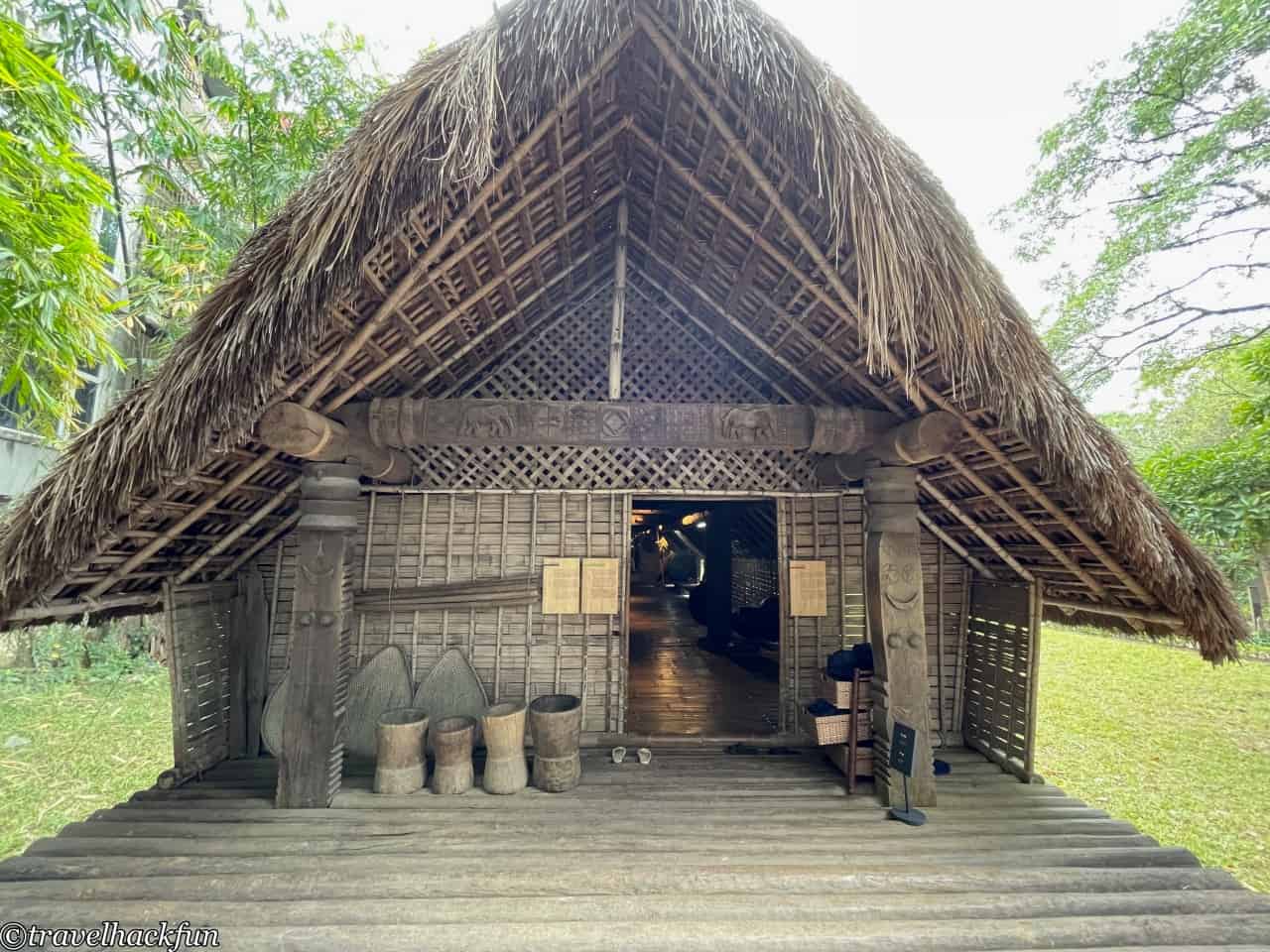
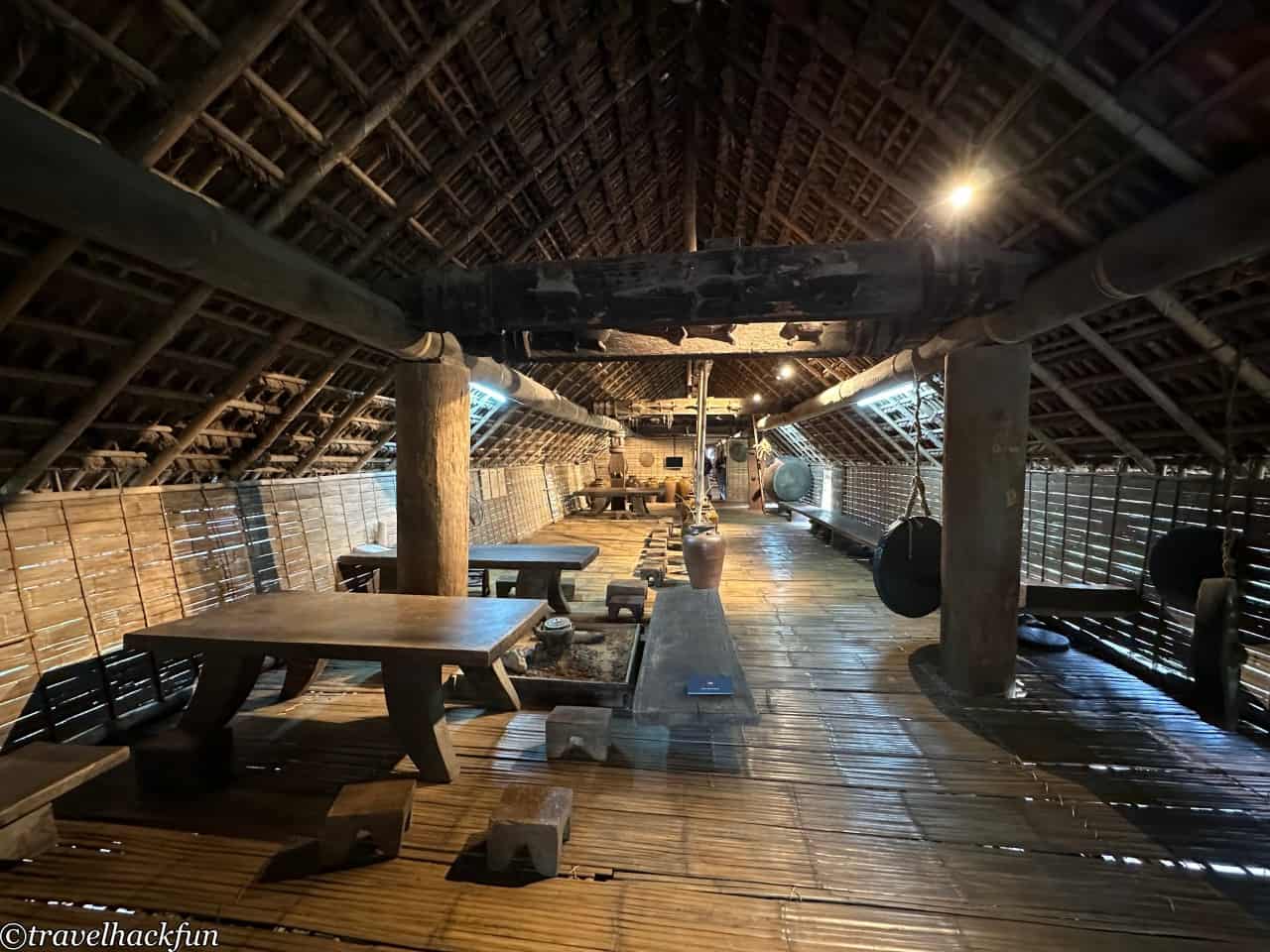
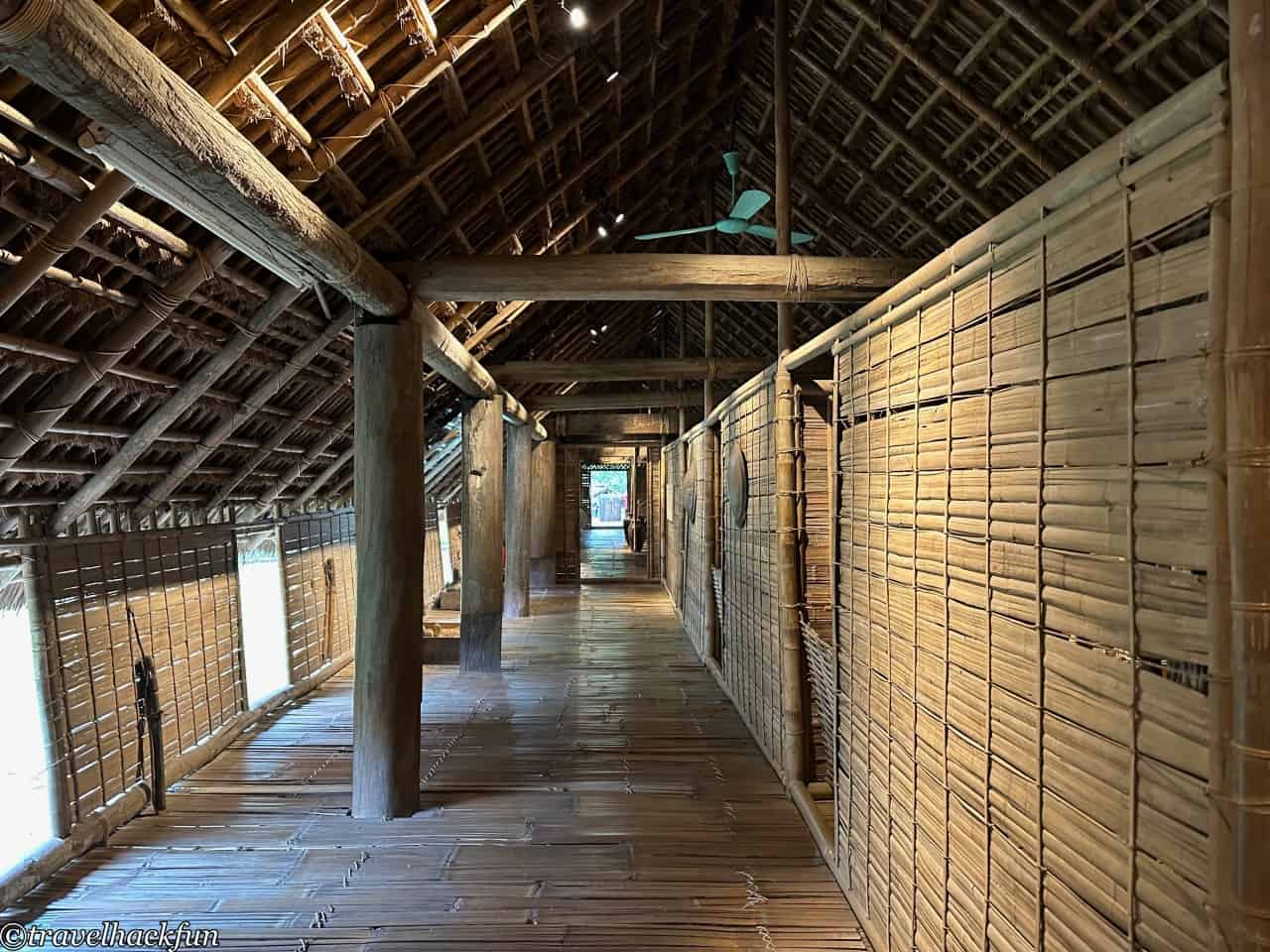
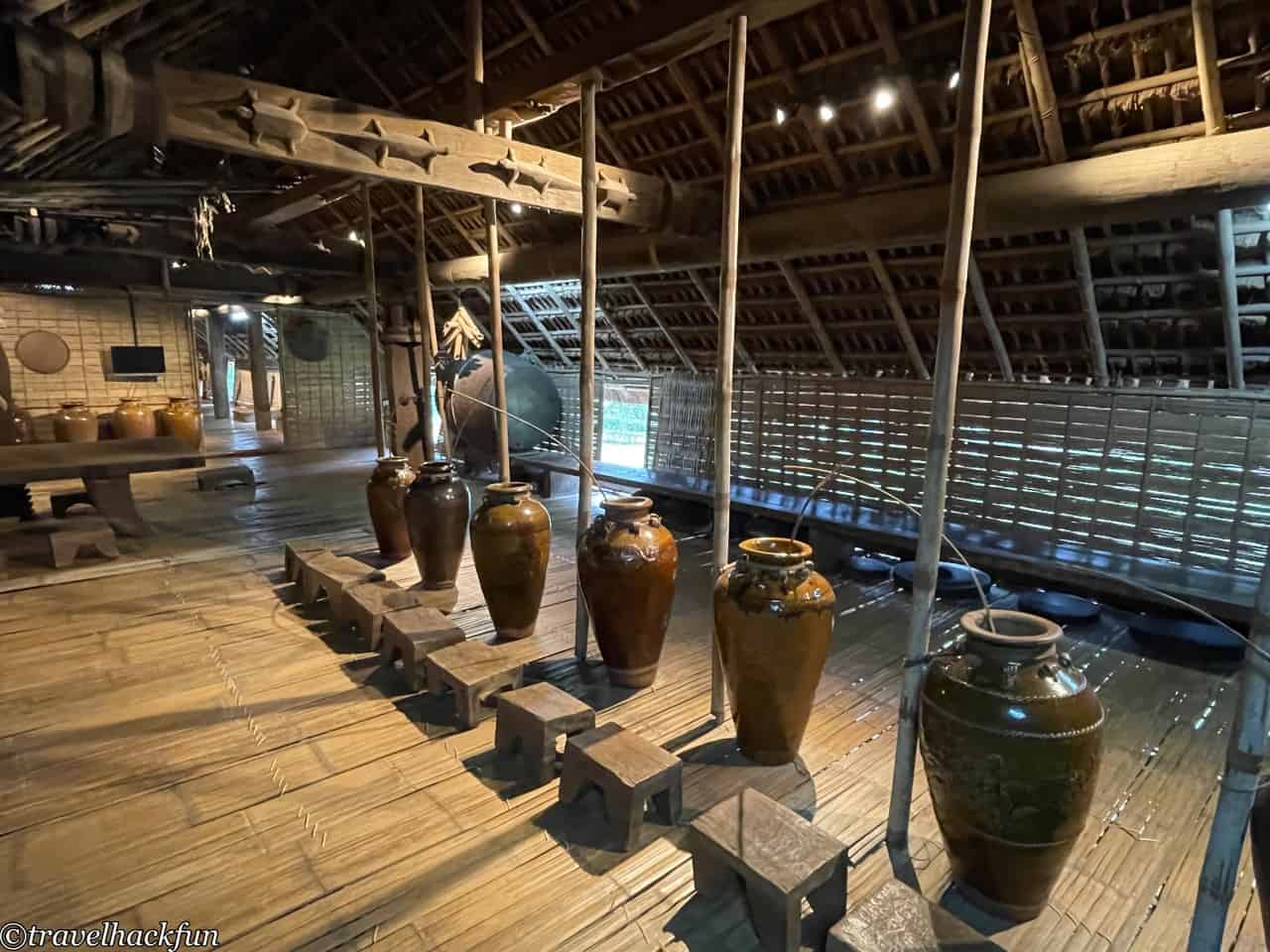
This is a communal tomb of the Jarai Arap ethnic group, burying thirty people inside. Around the tomb, there are nude wooden statues, both male and female, symbolizing the idea of rebirth.
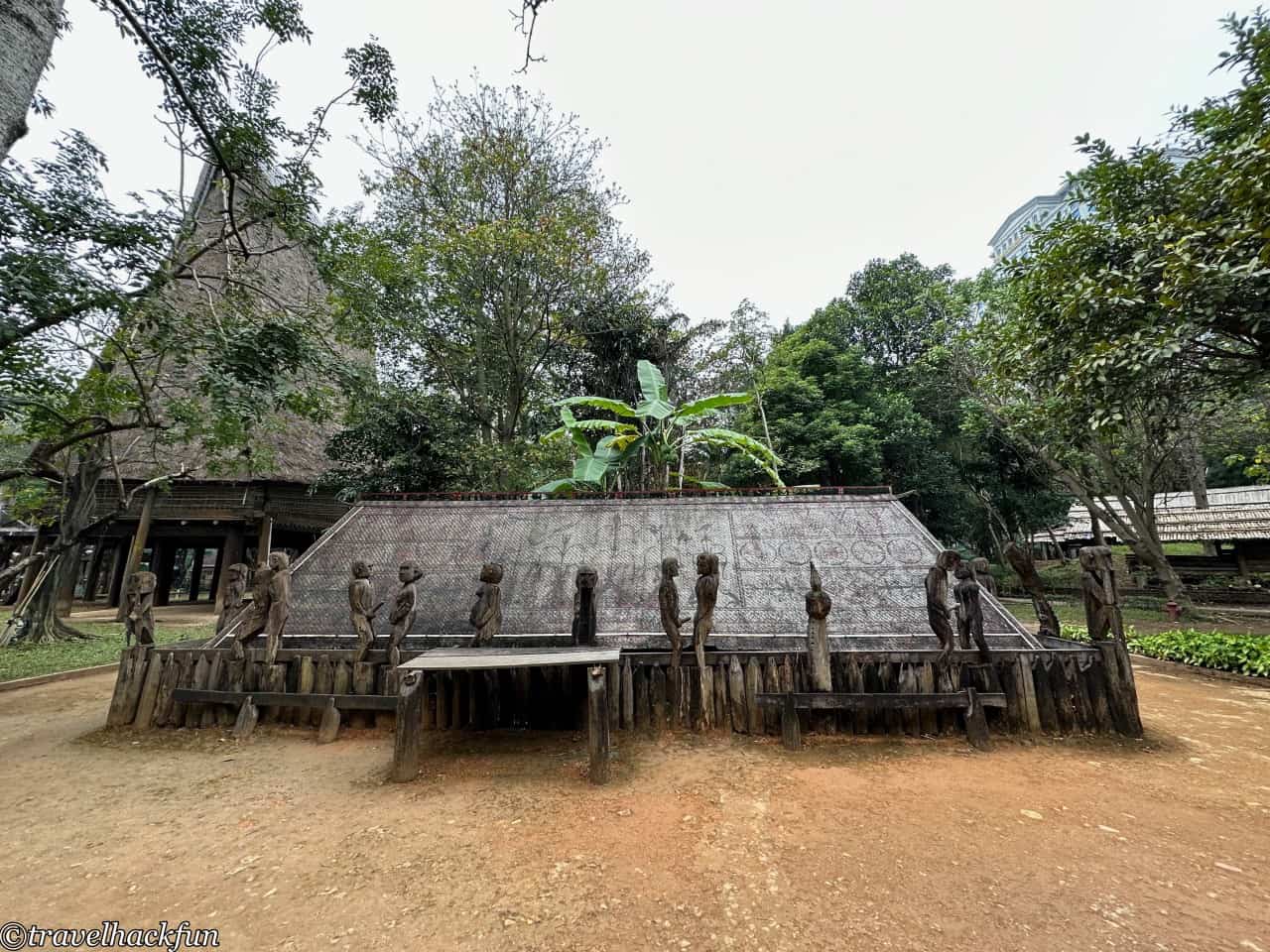
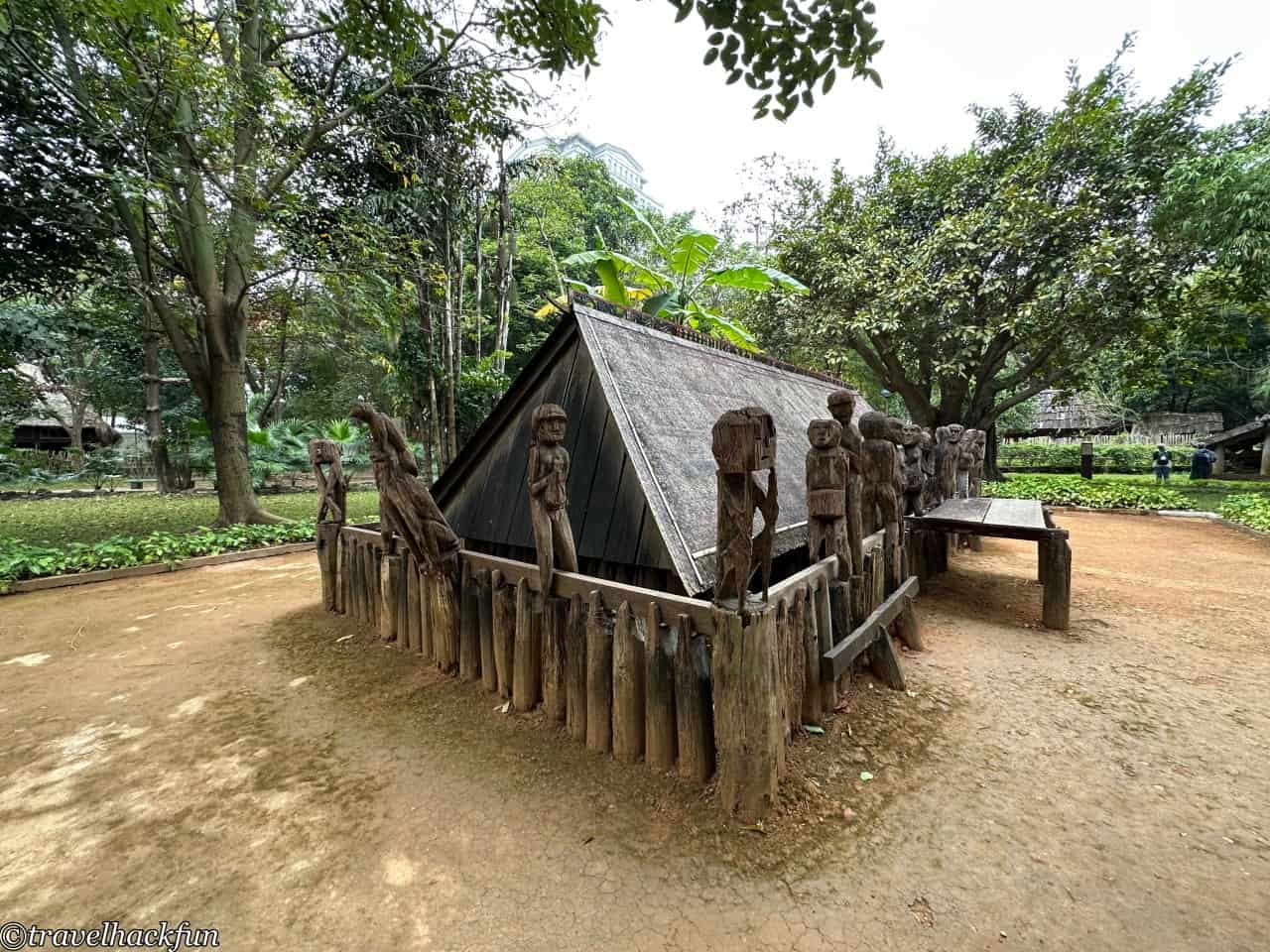
There are also many houses from different ethnic groups, such as the Yao, Dao, Hmong, and Tay, each with its unique characteristics, so I won't go into detail about each one.
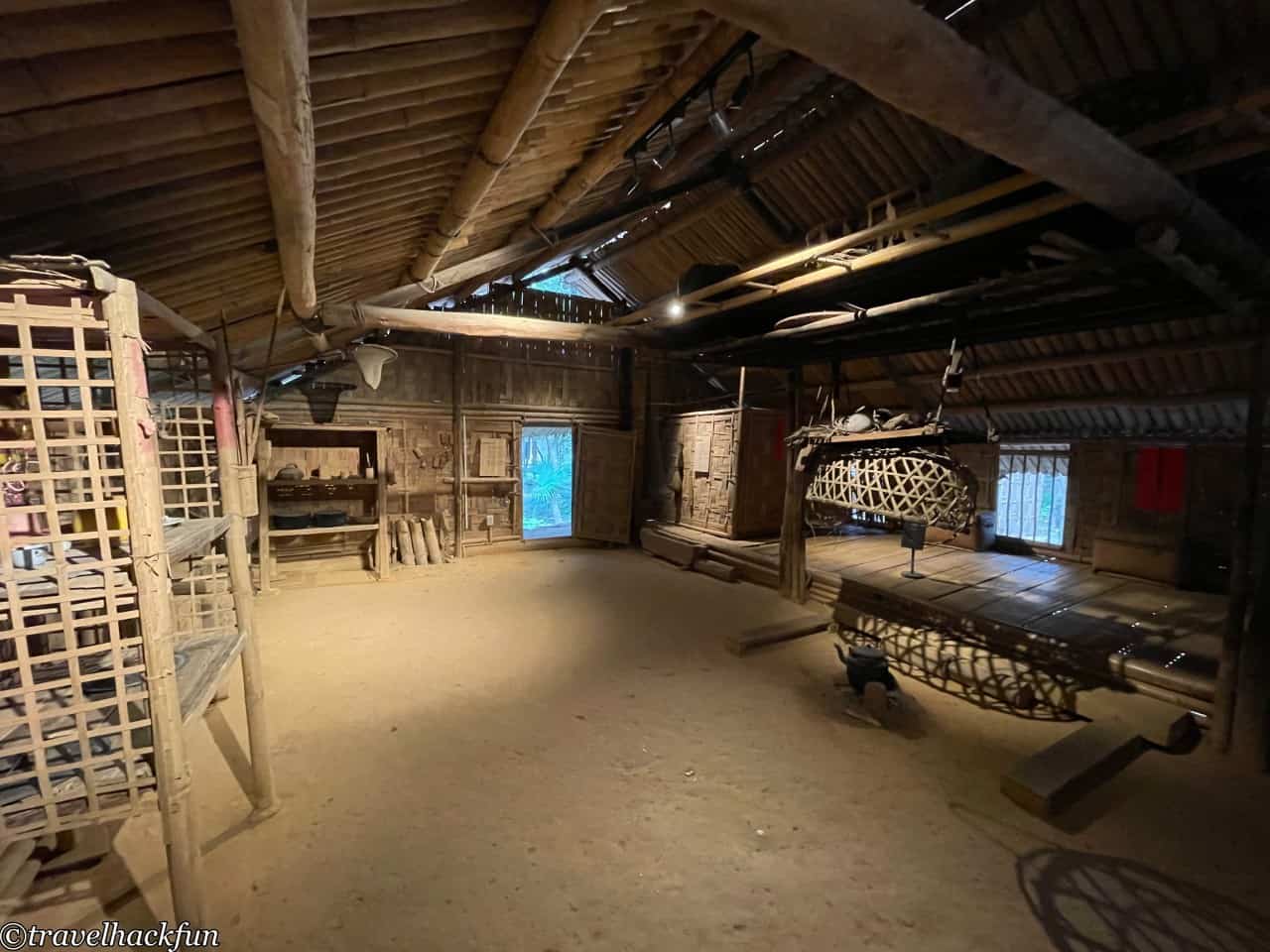
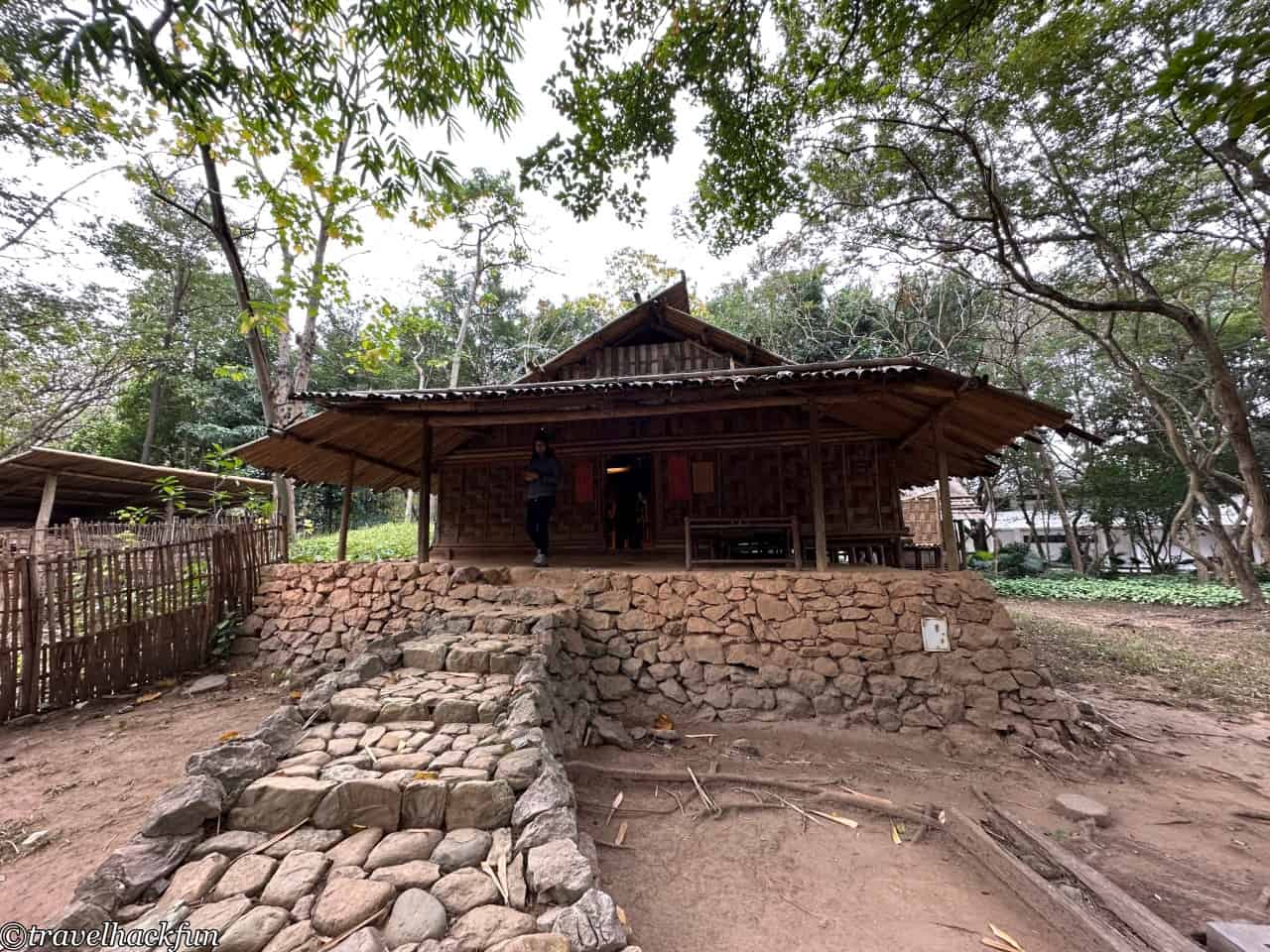


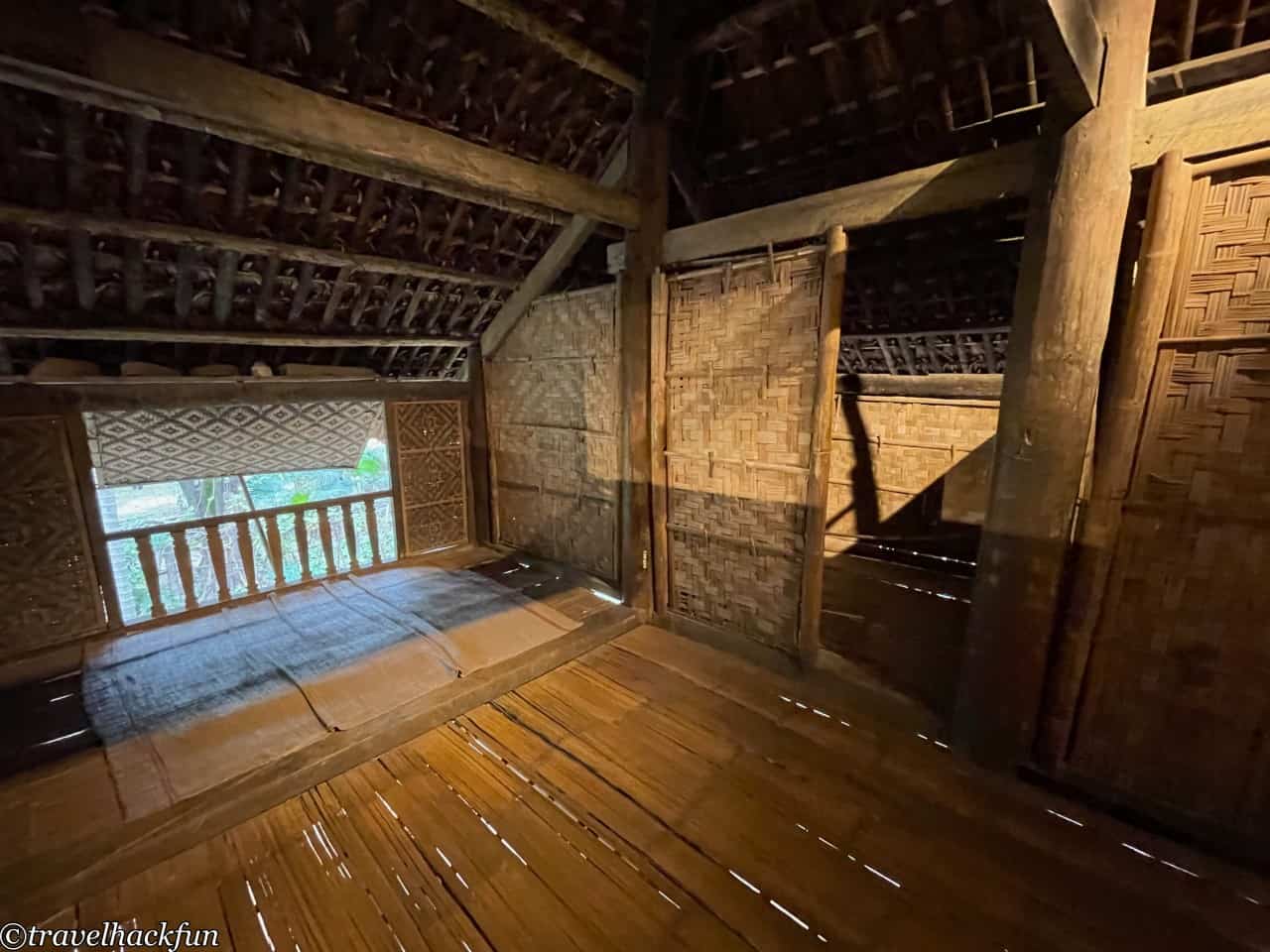
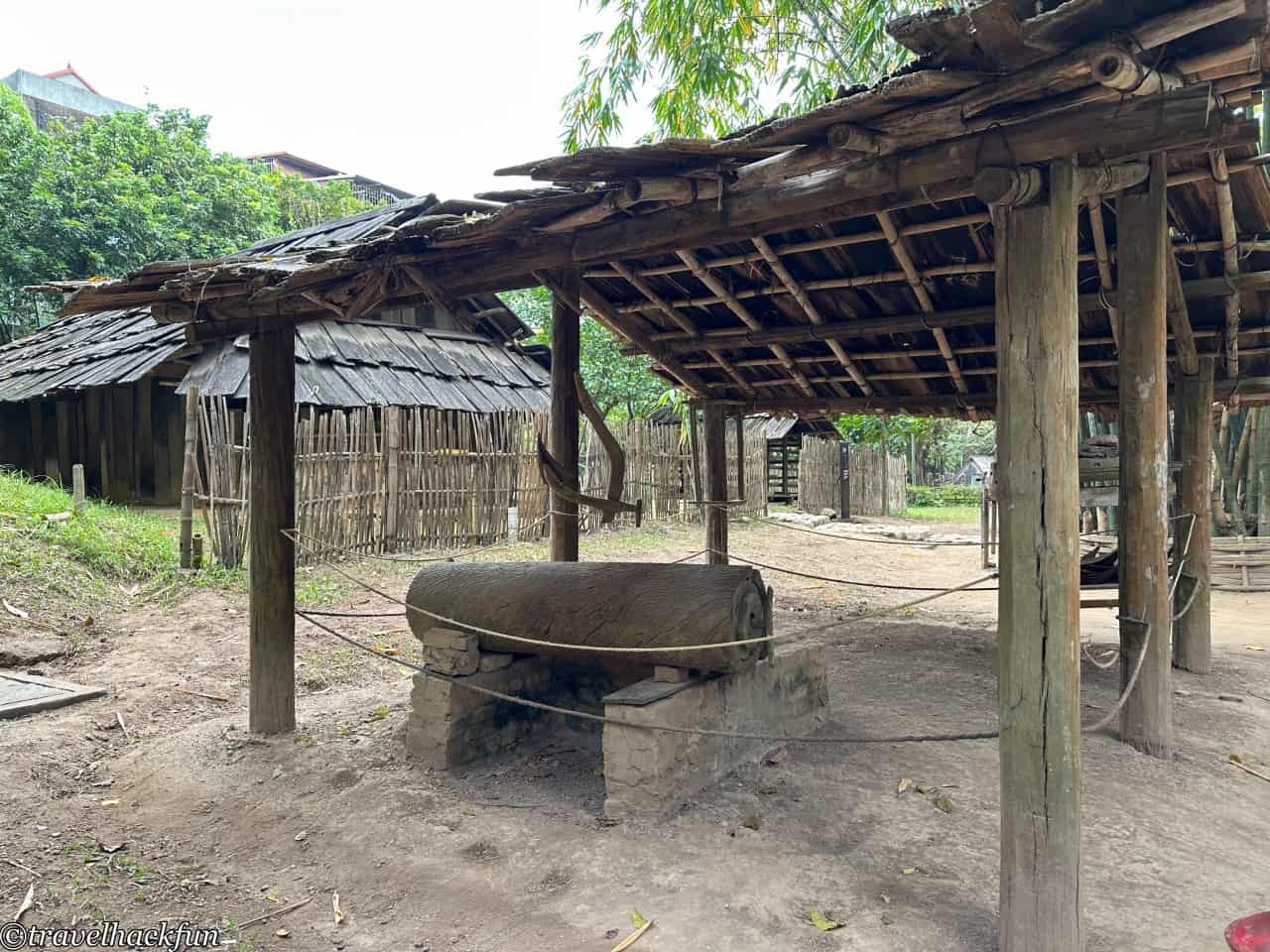
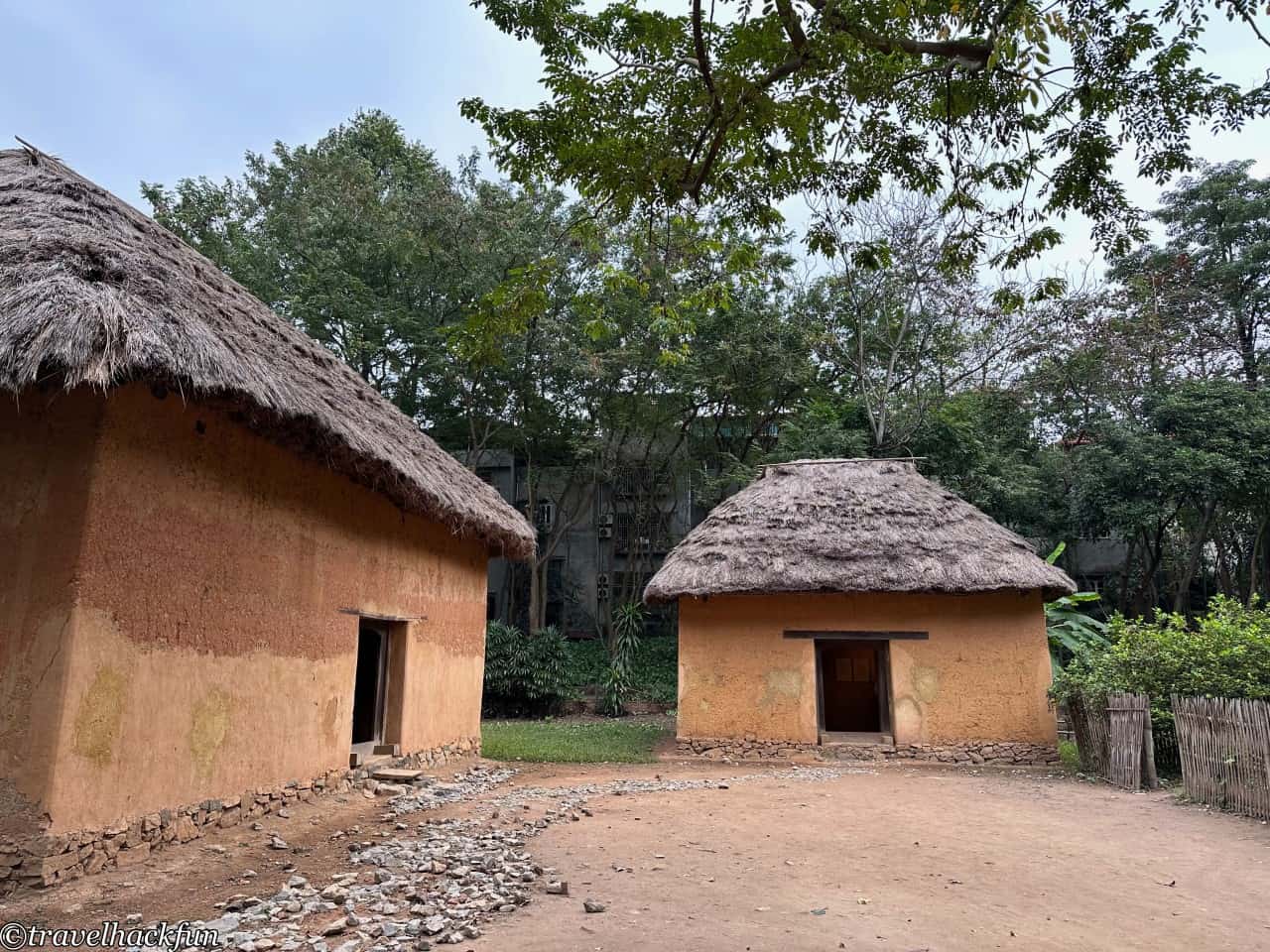
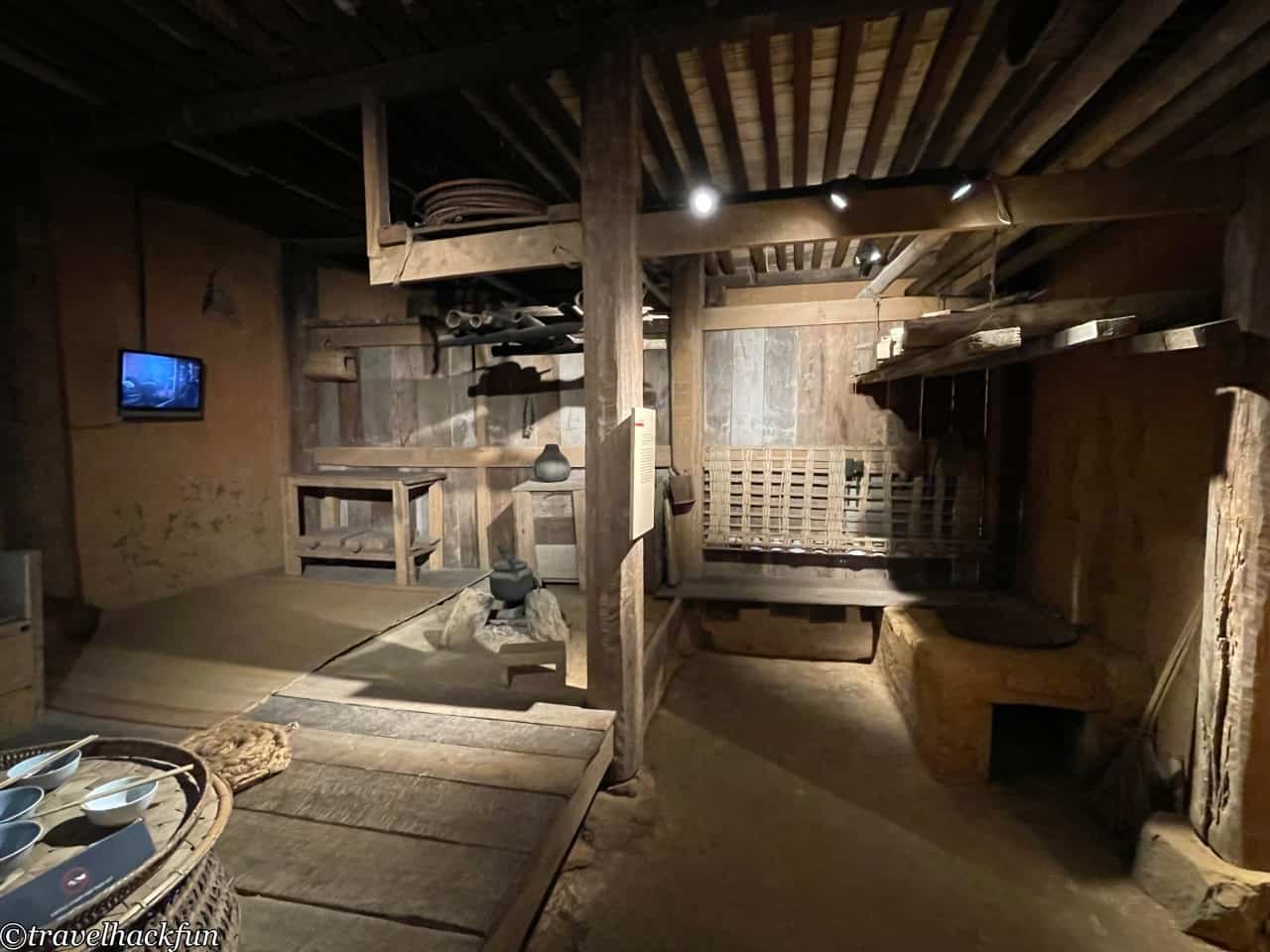

☕ Enjoying my travel notes?
You can Buy me a coffee to support what I do 🙌
Further reading
- More HanoiRelated Posts